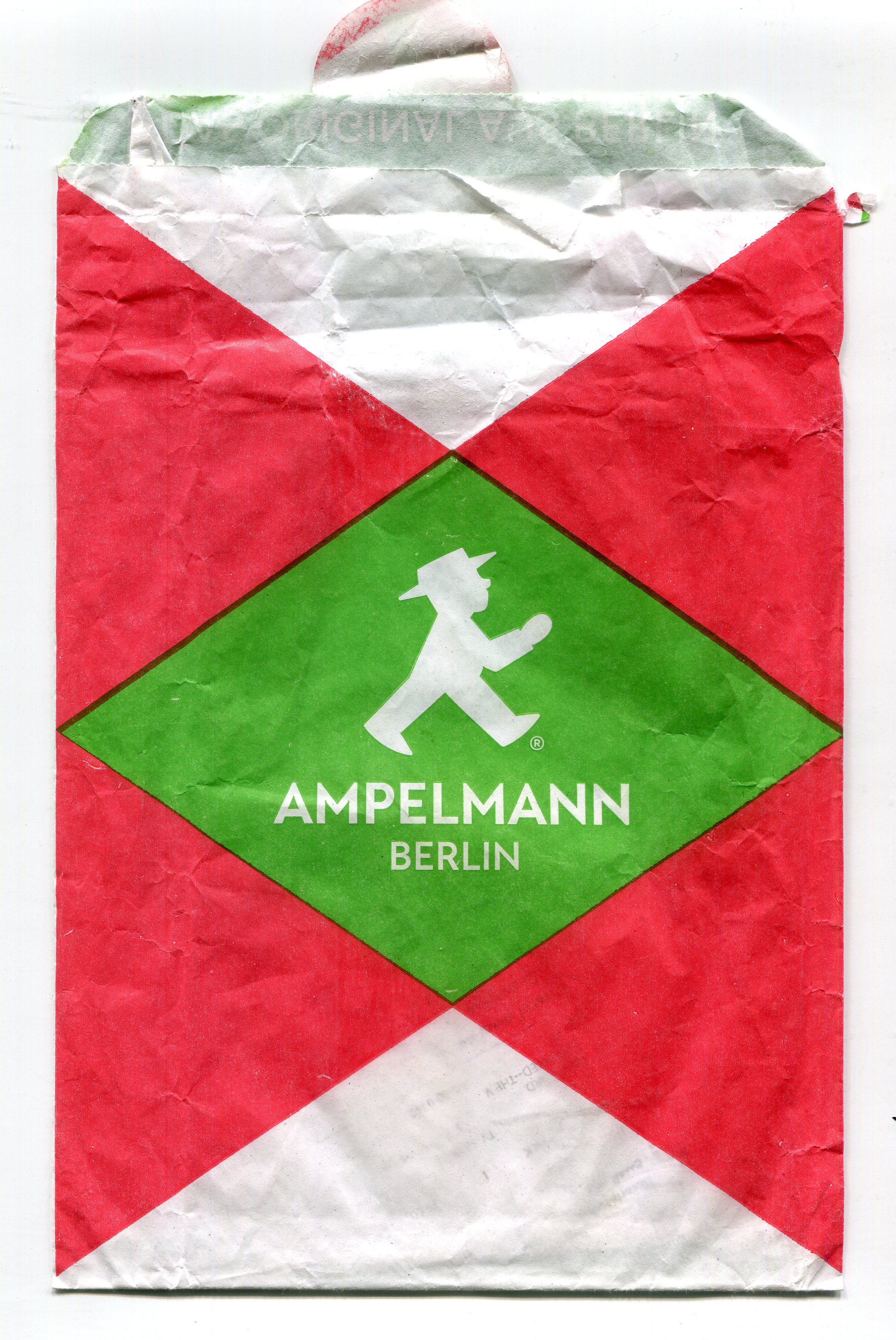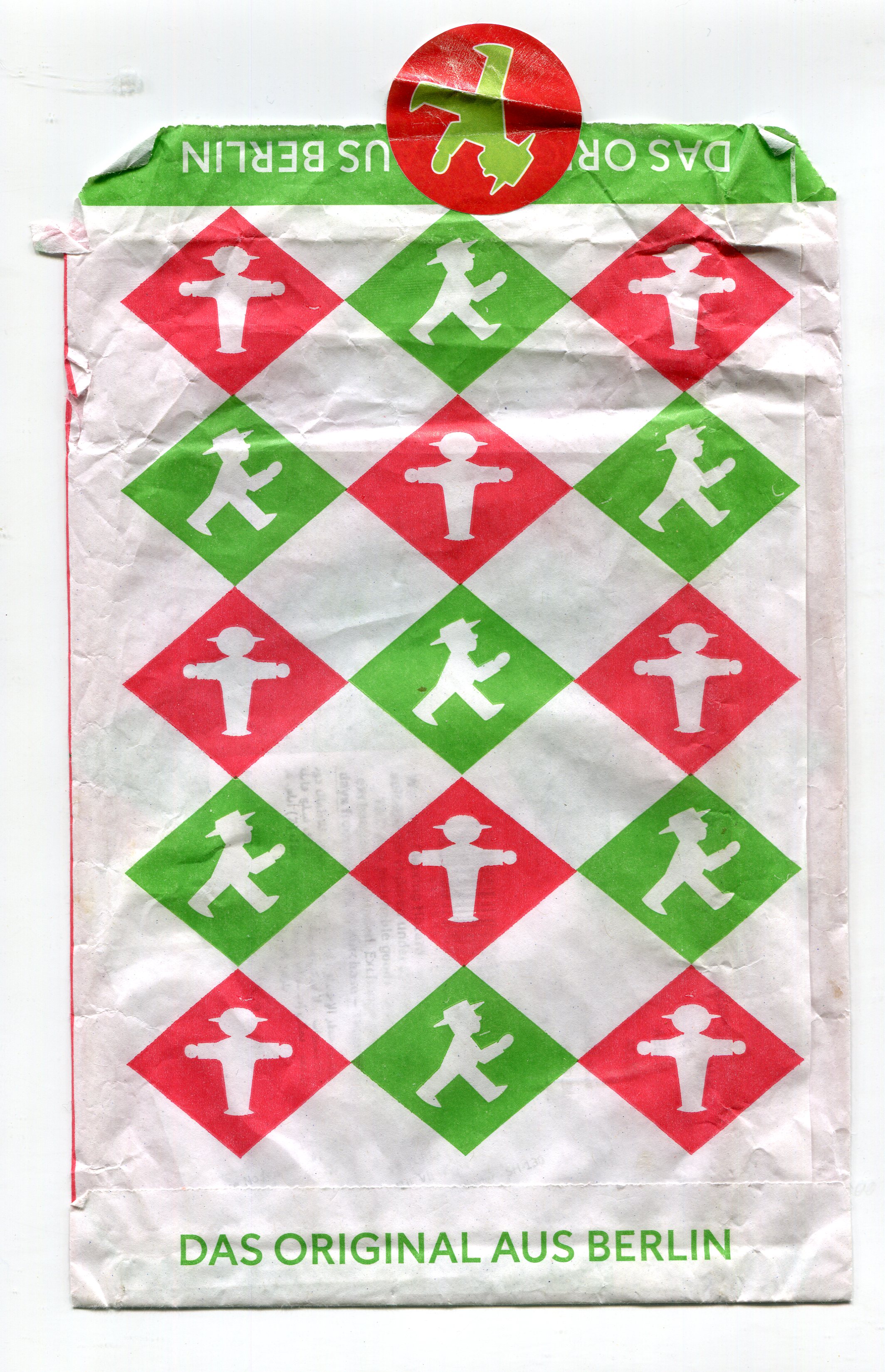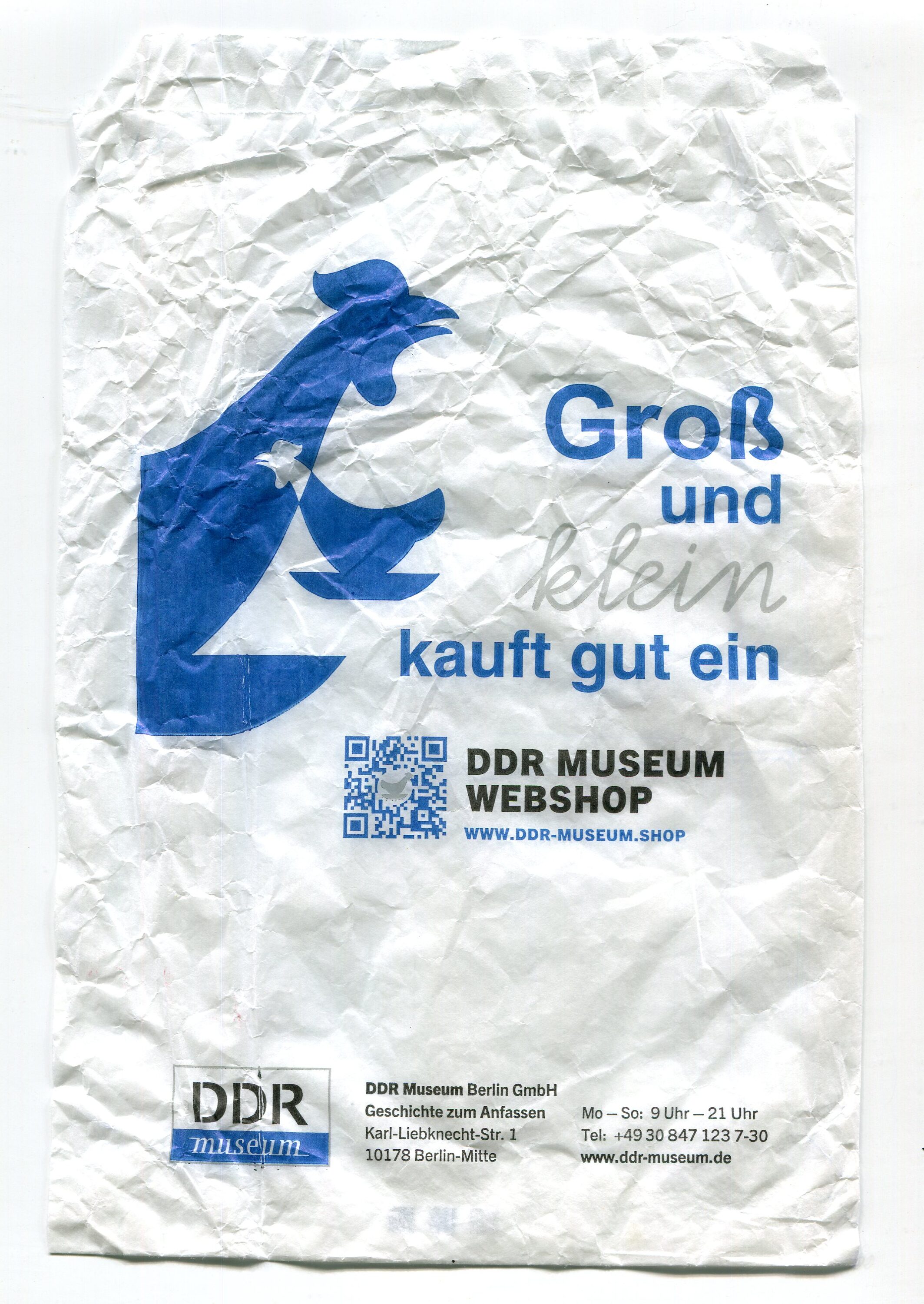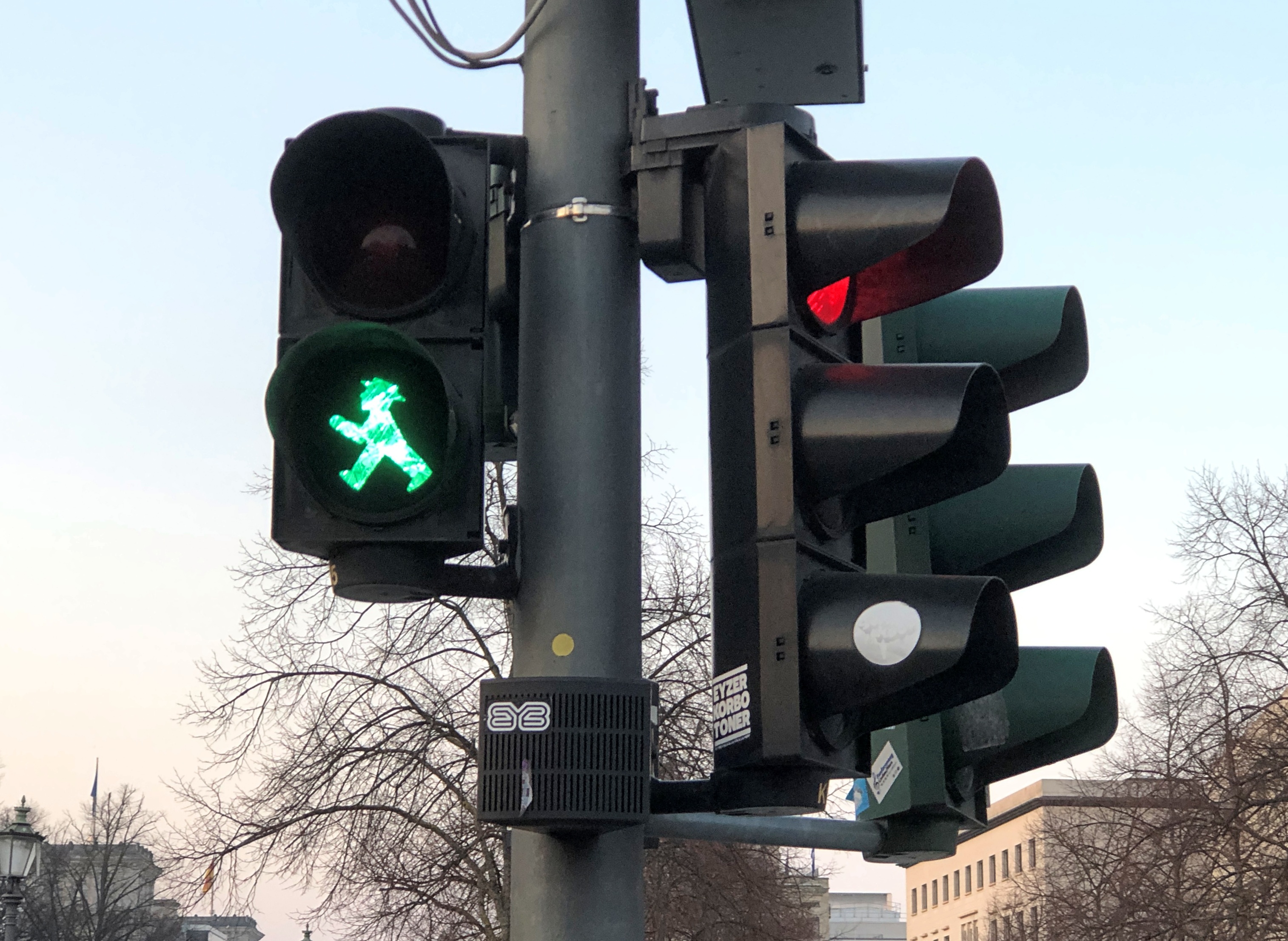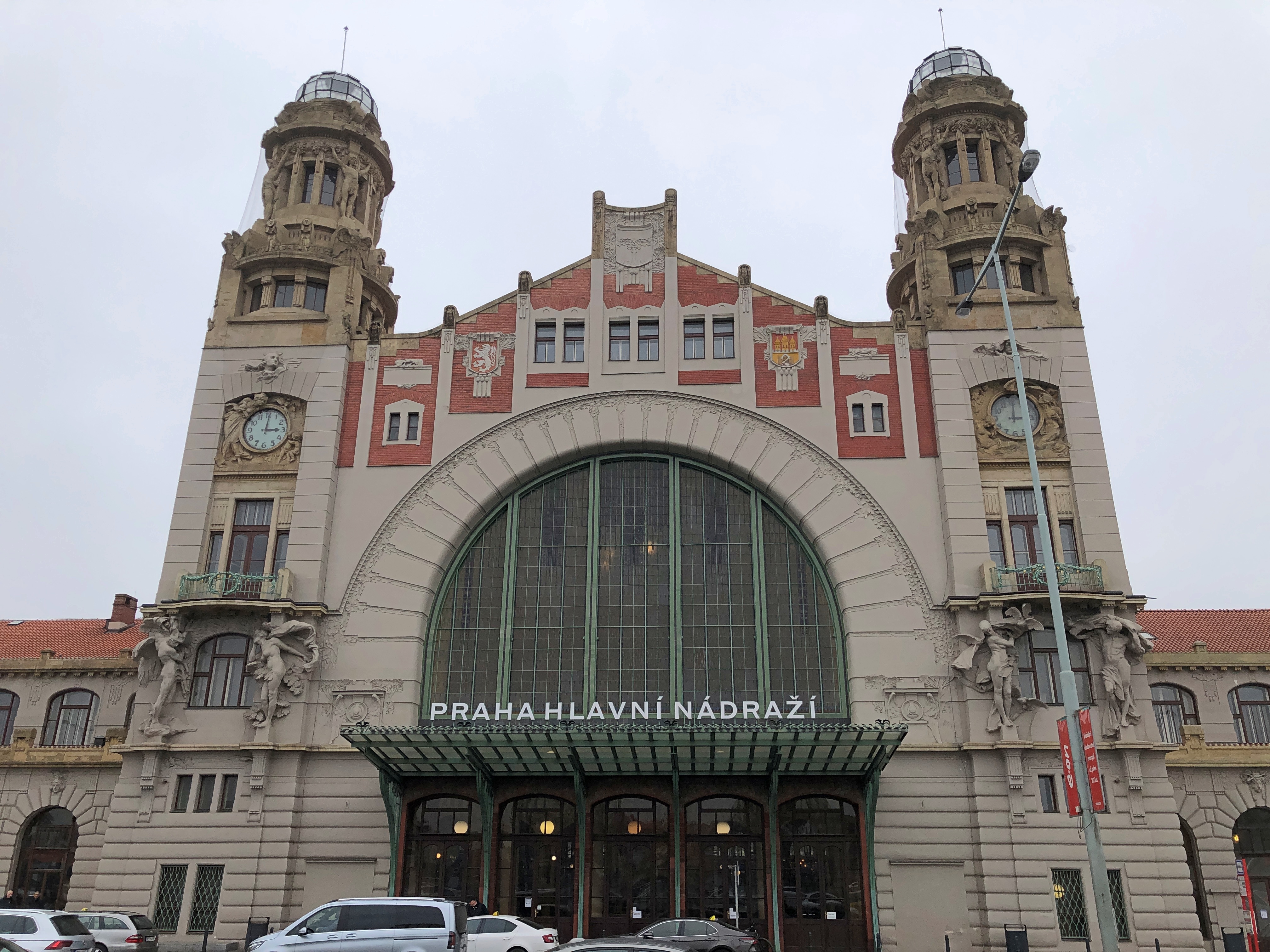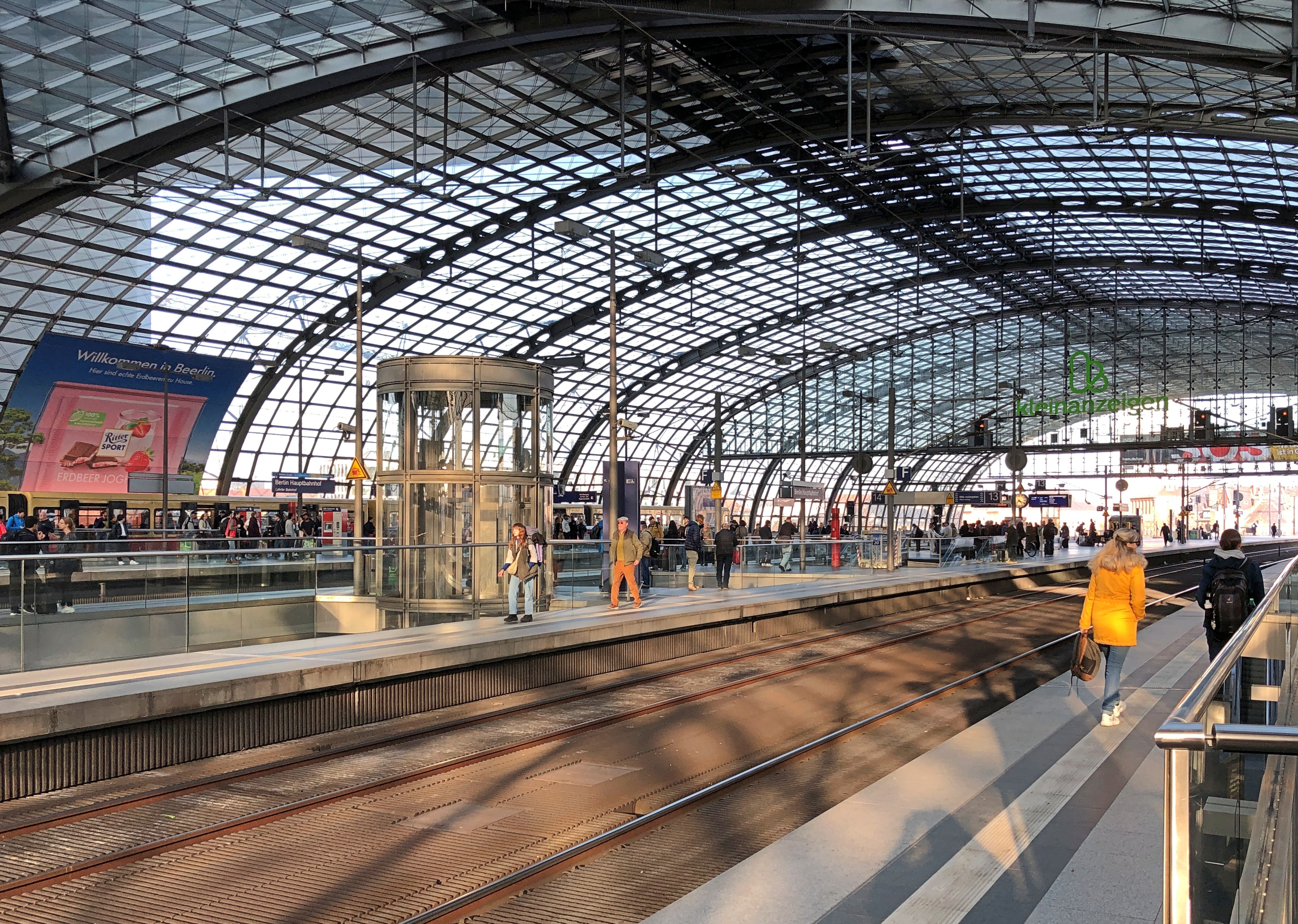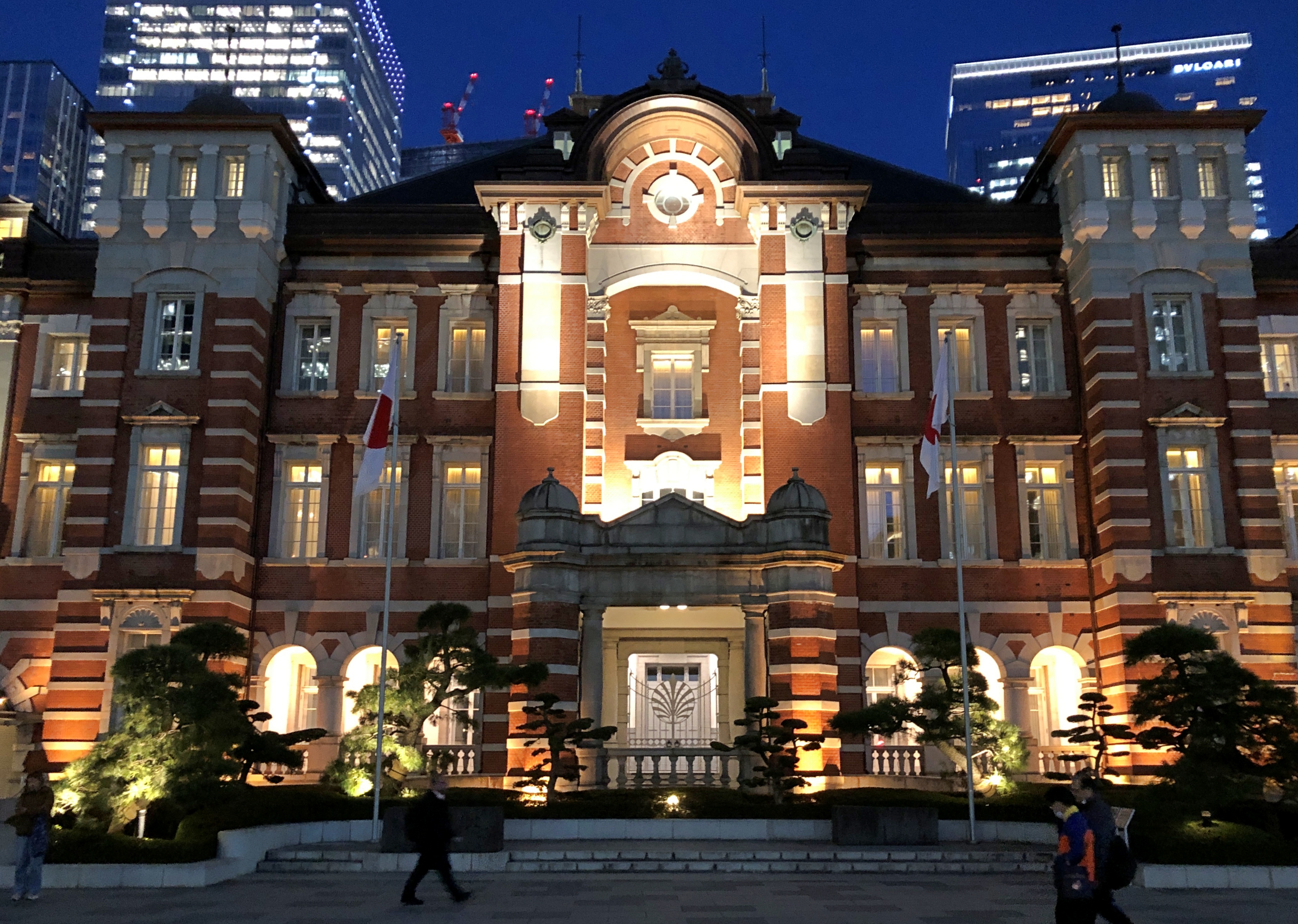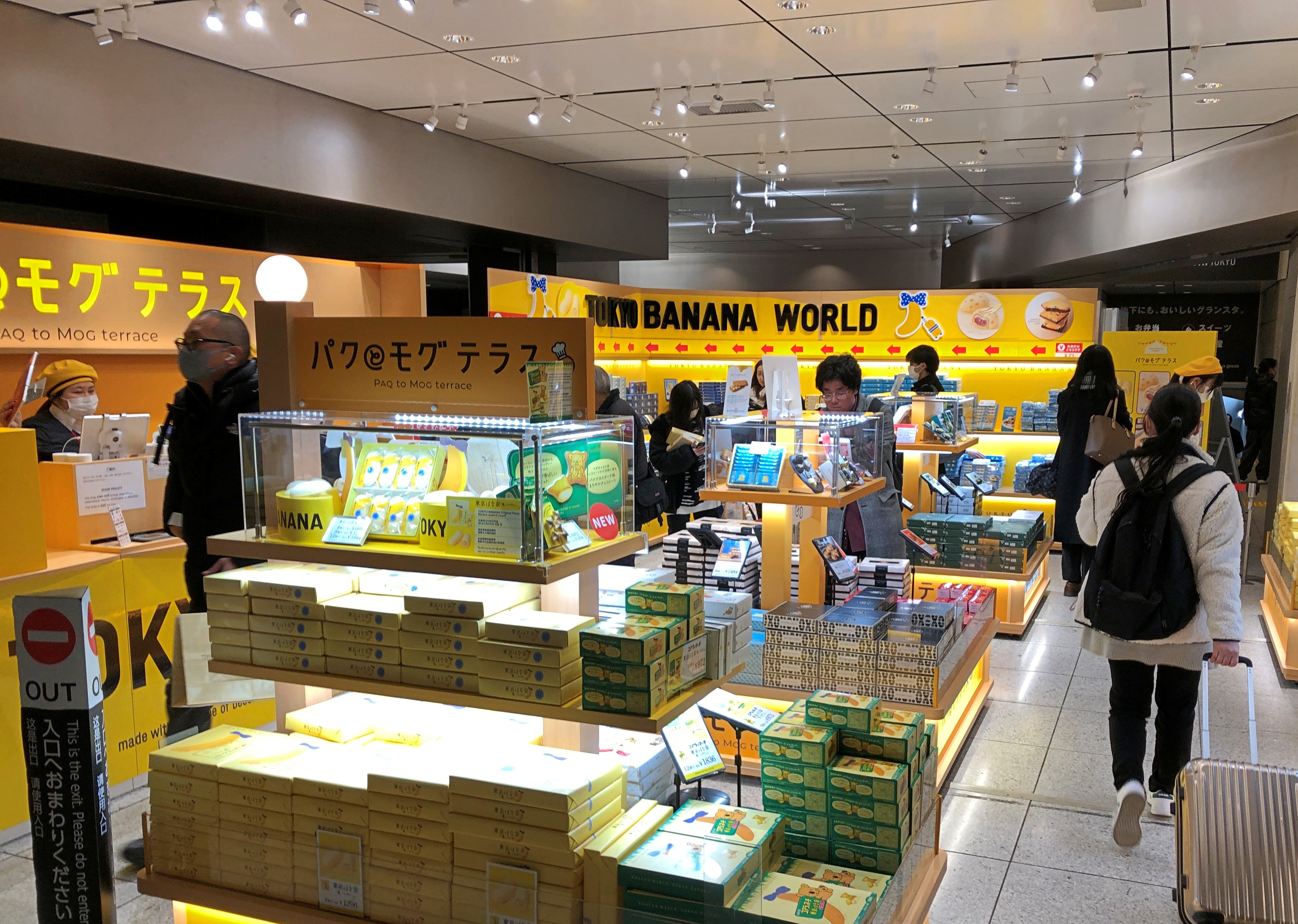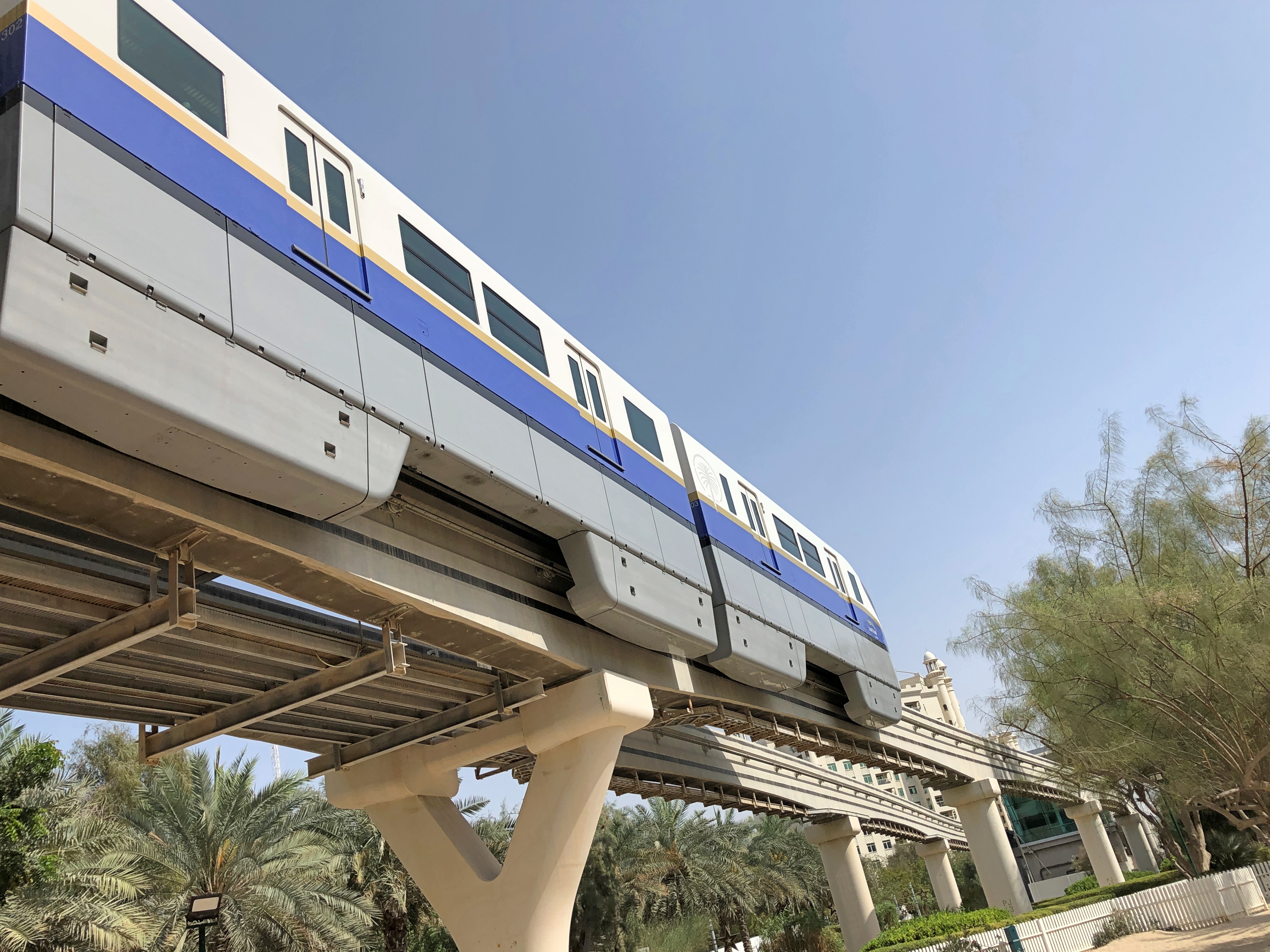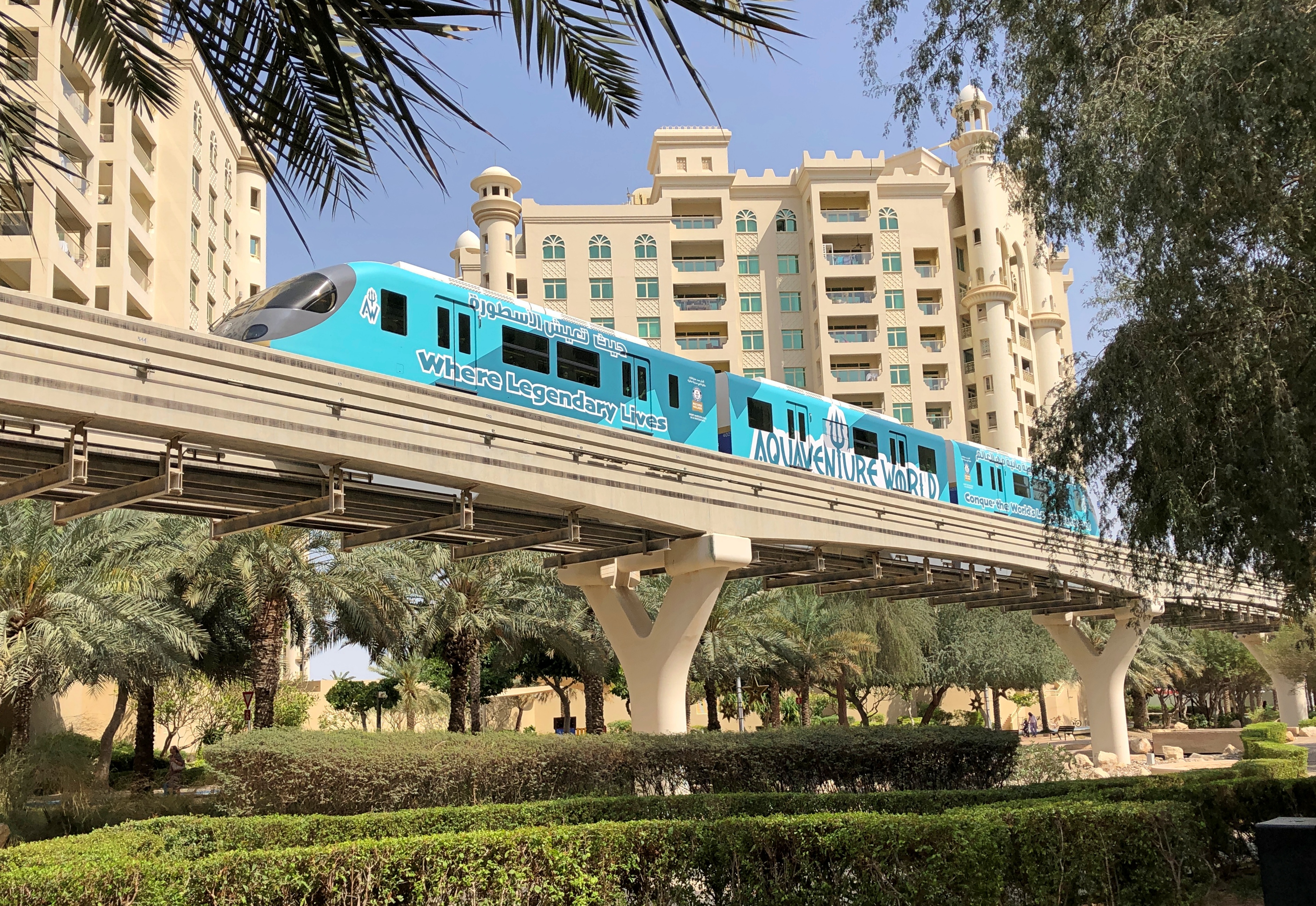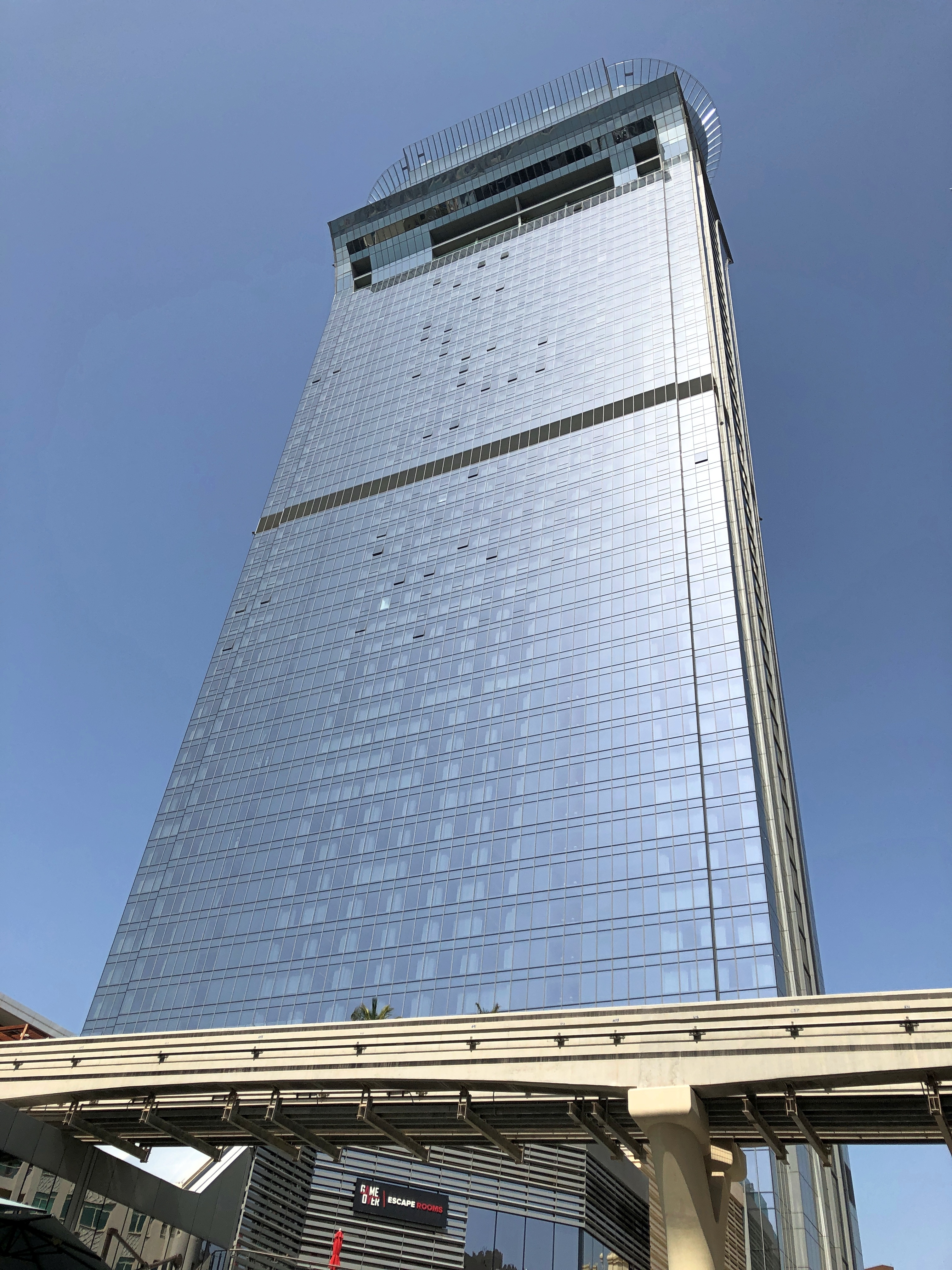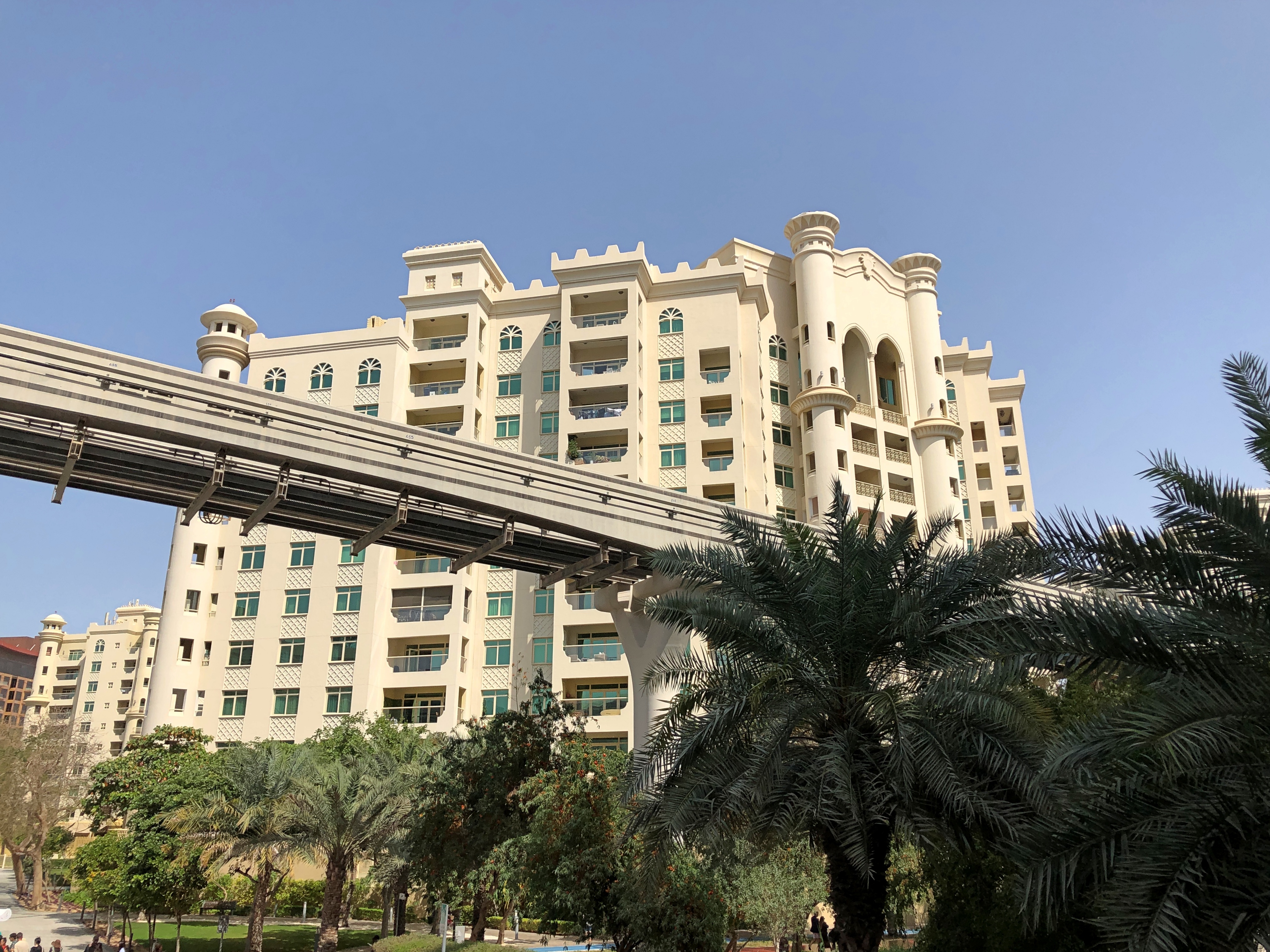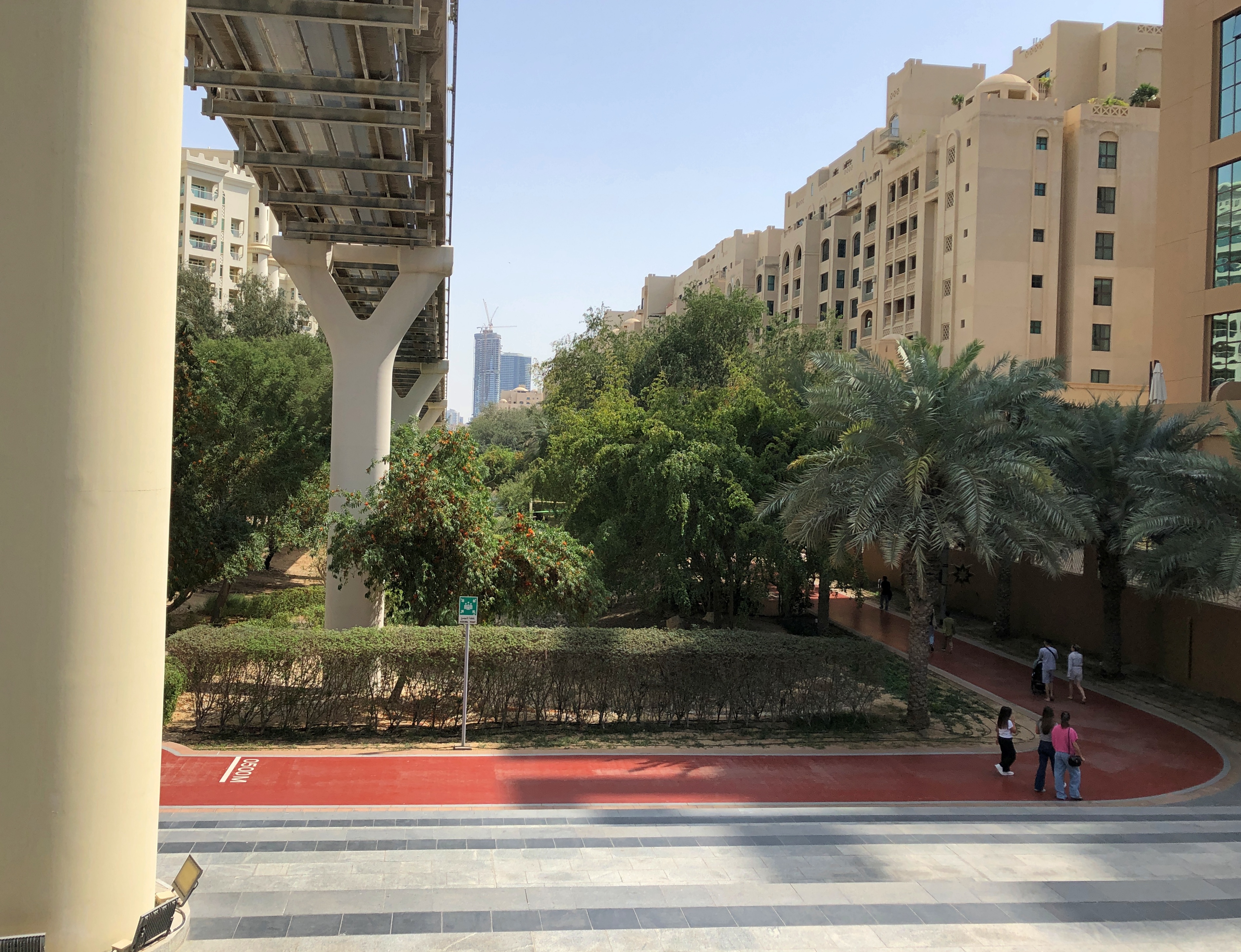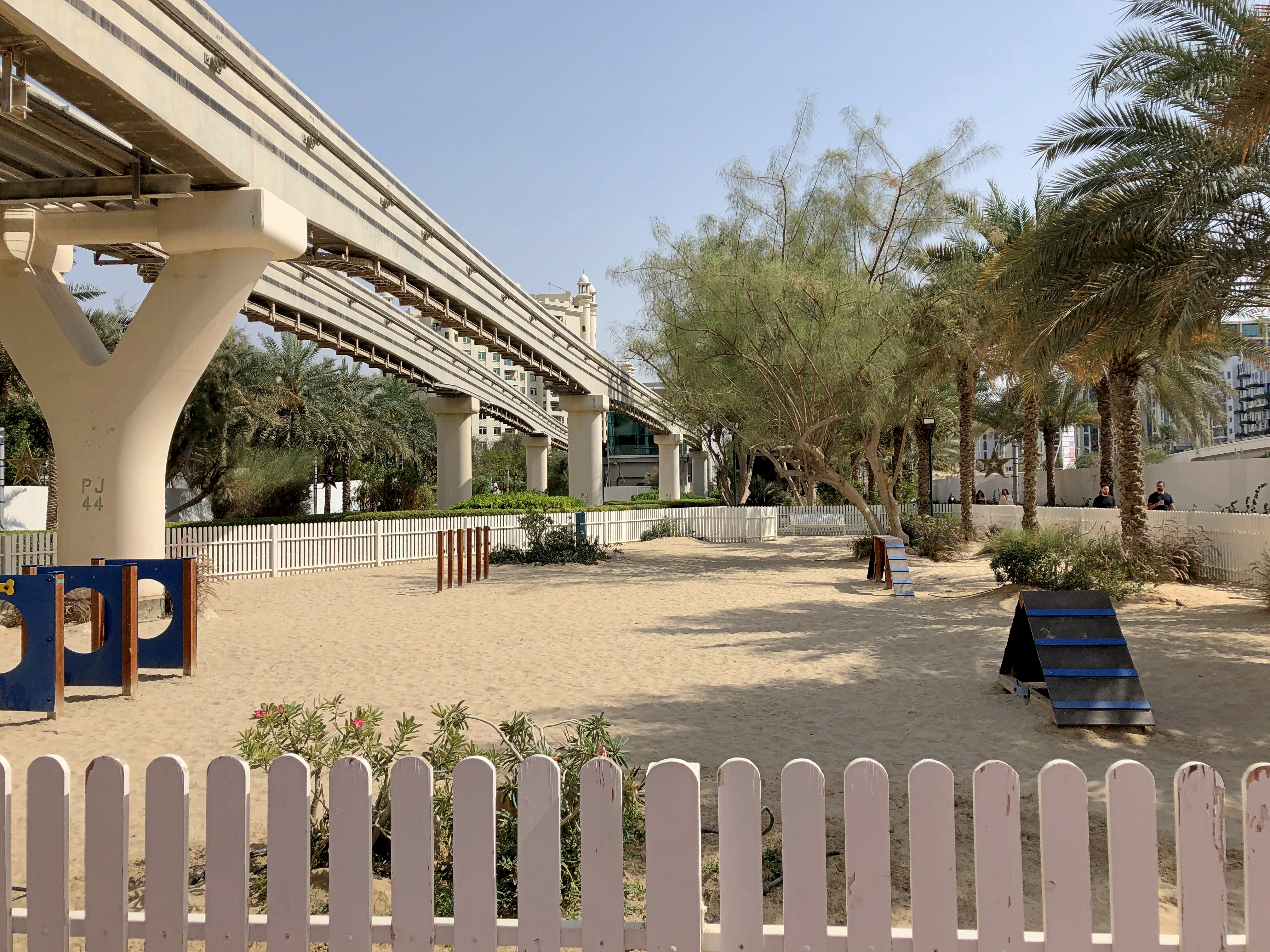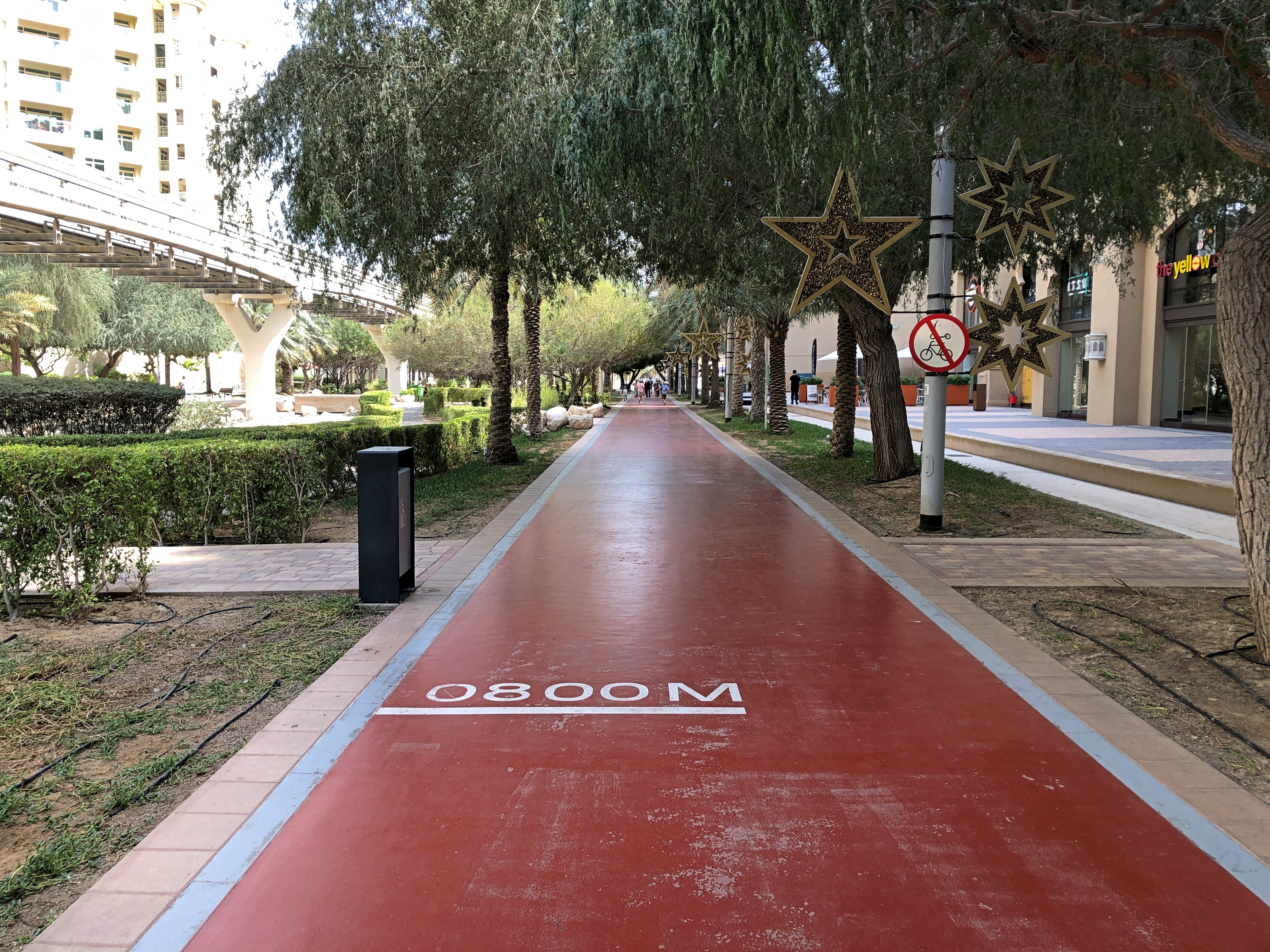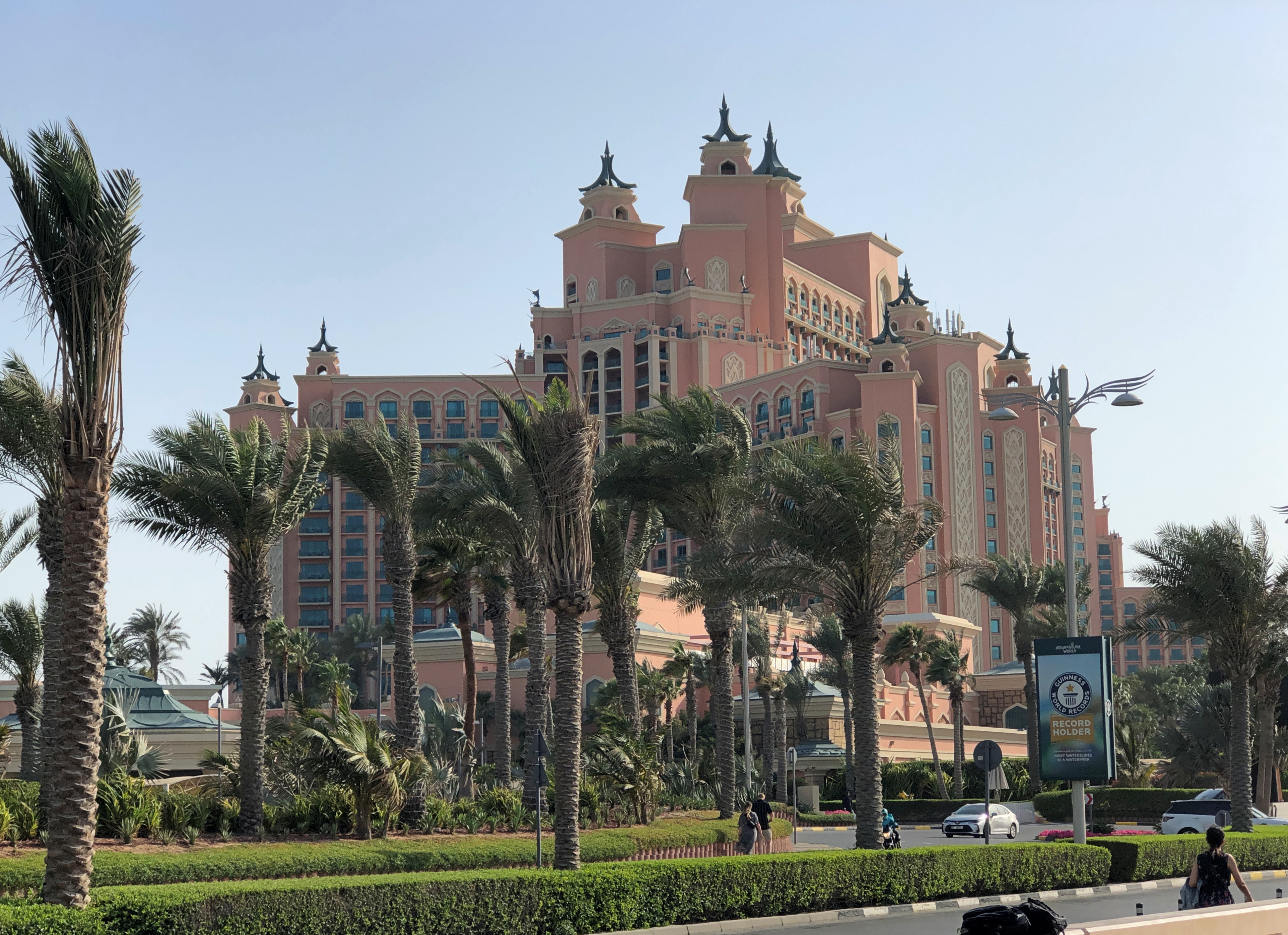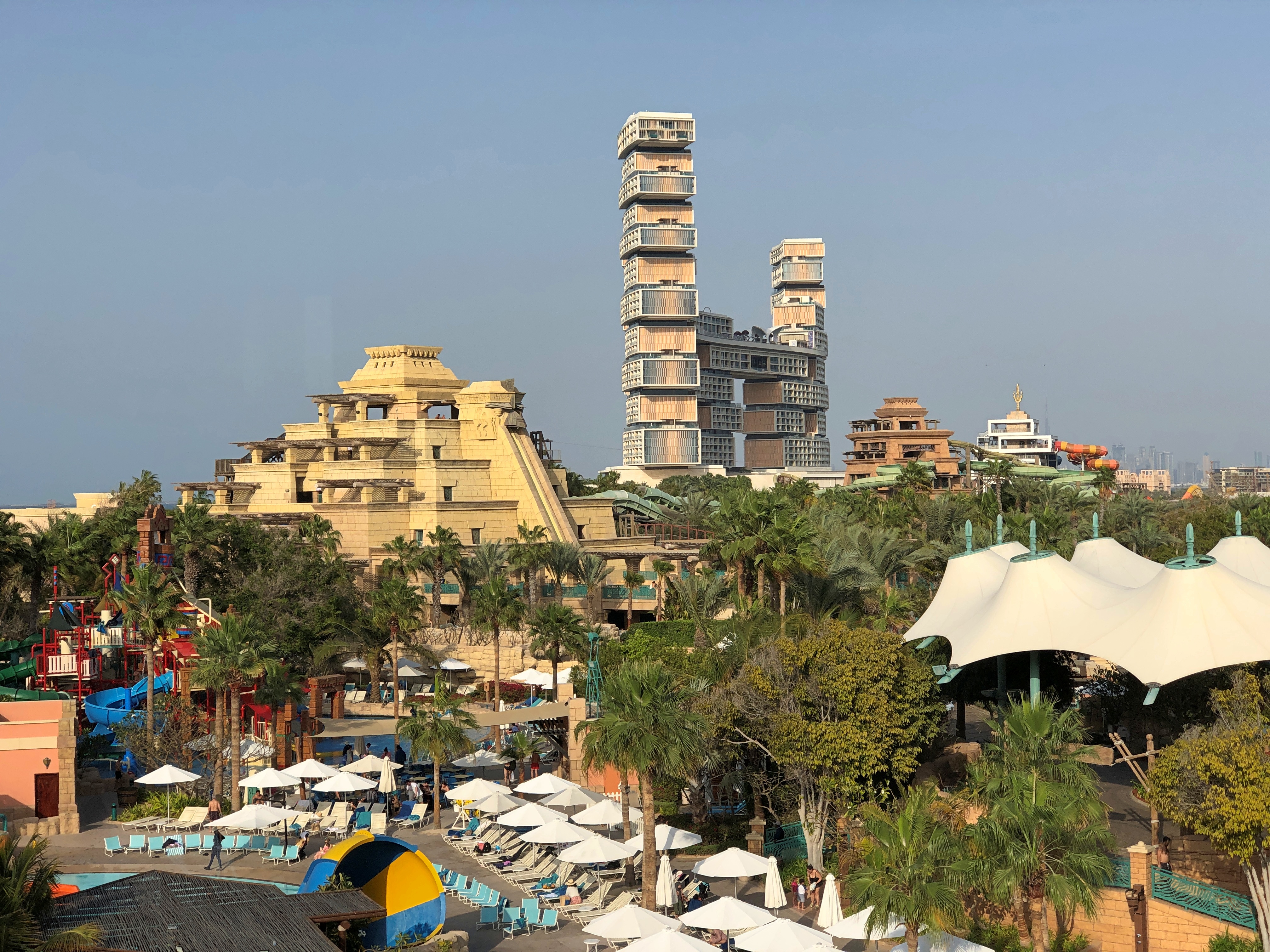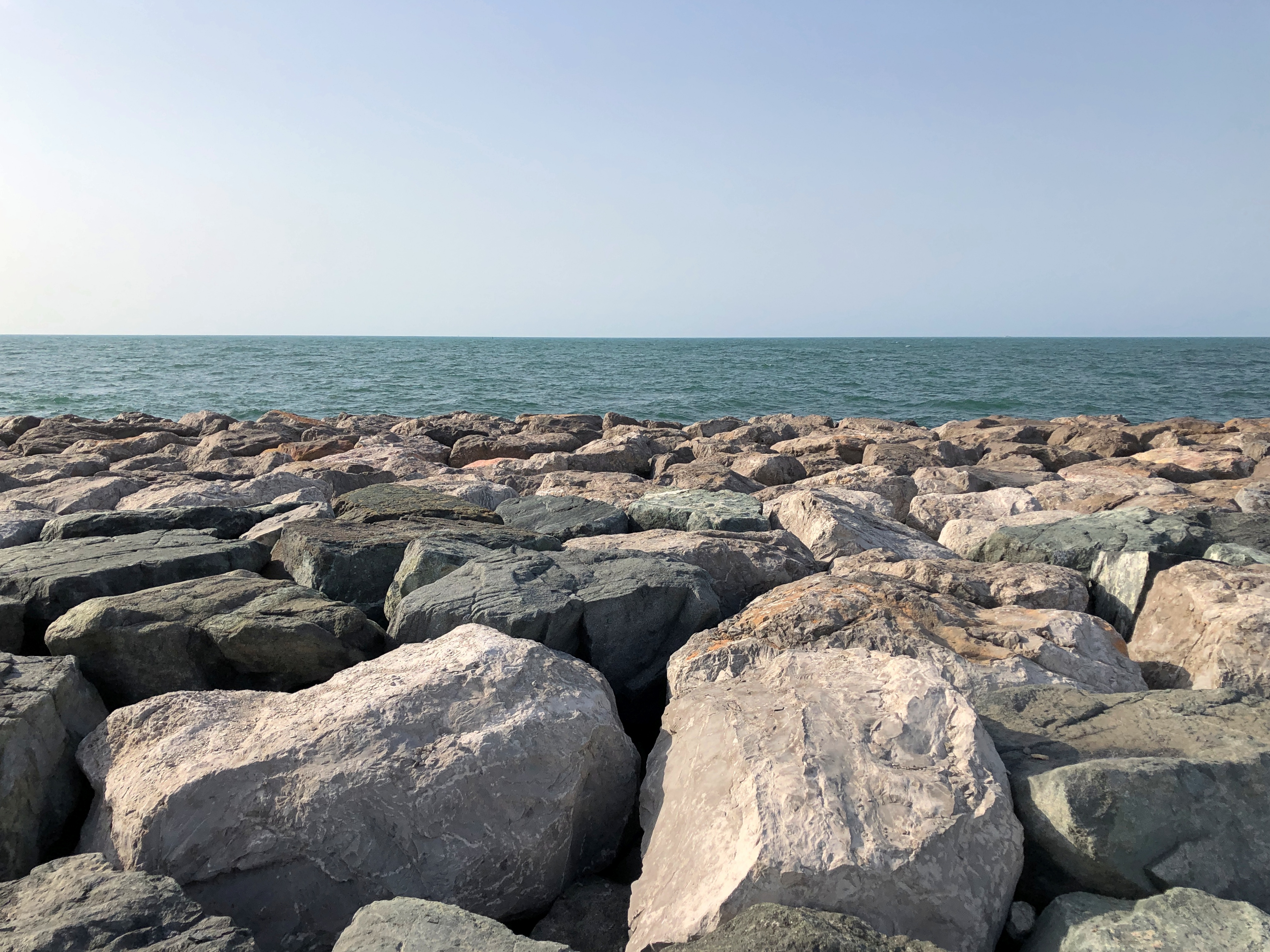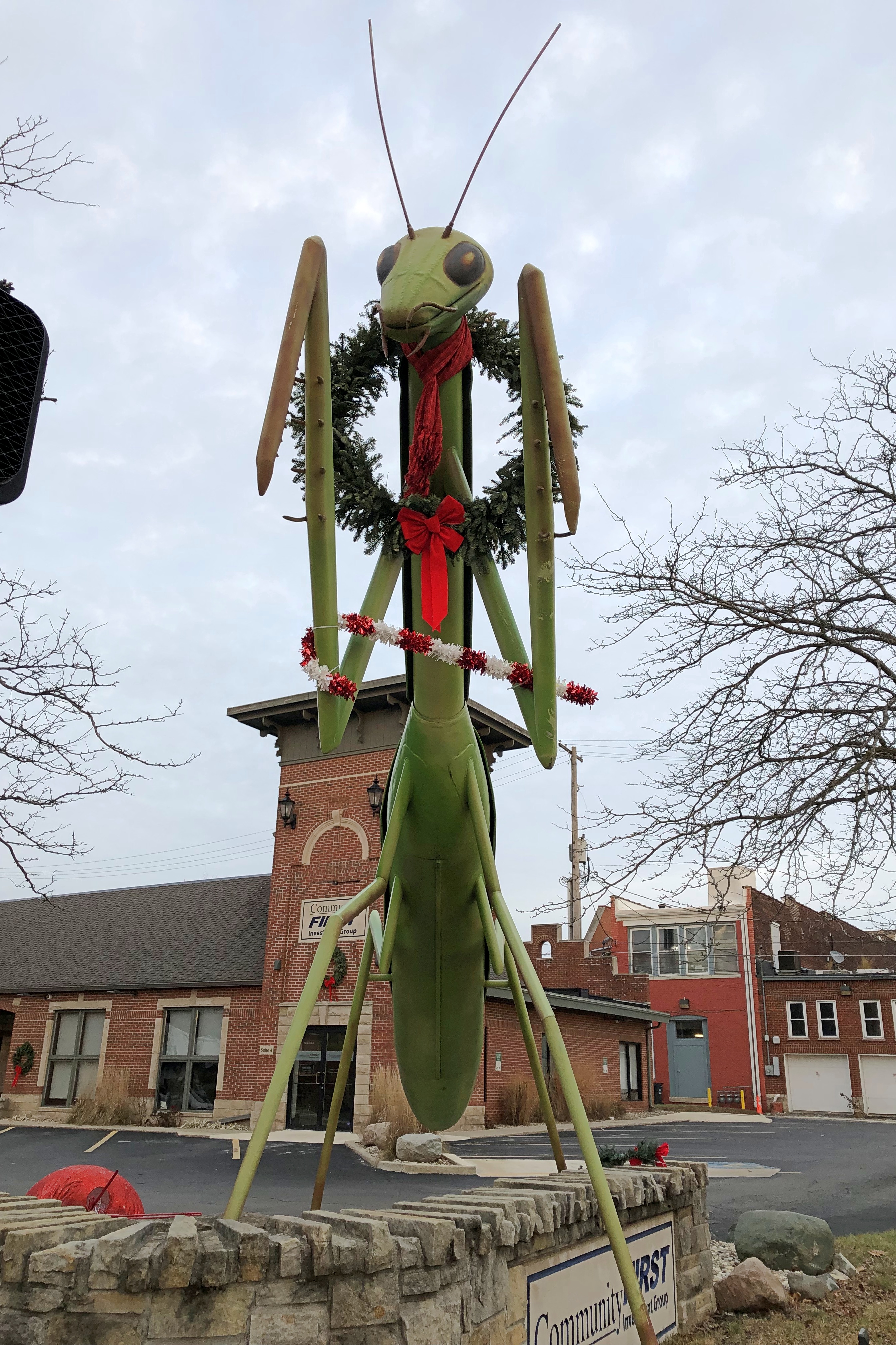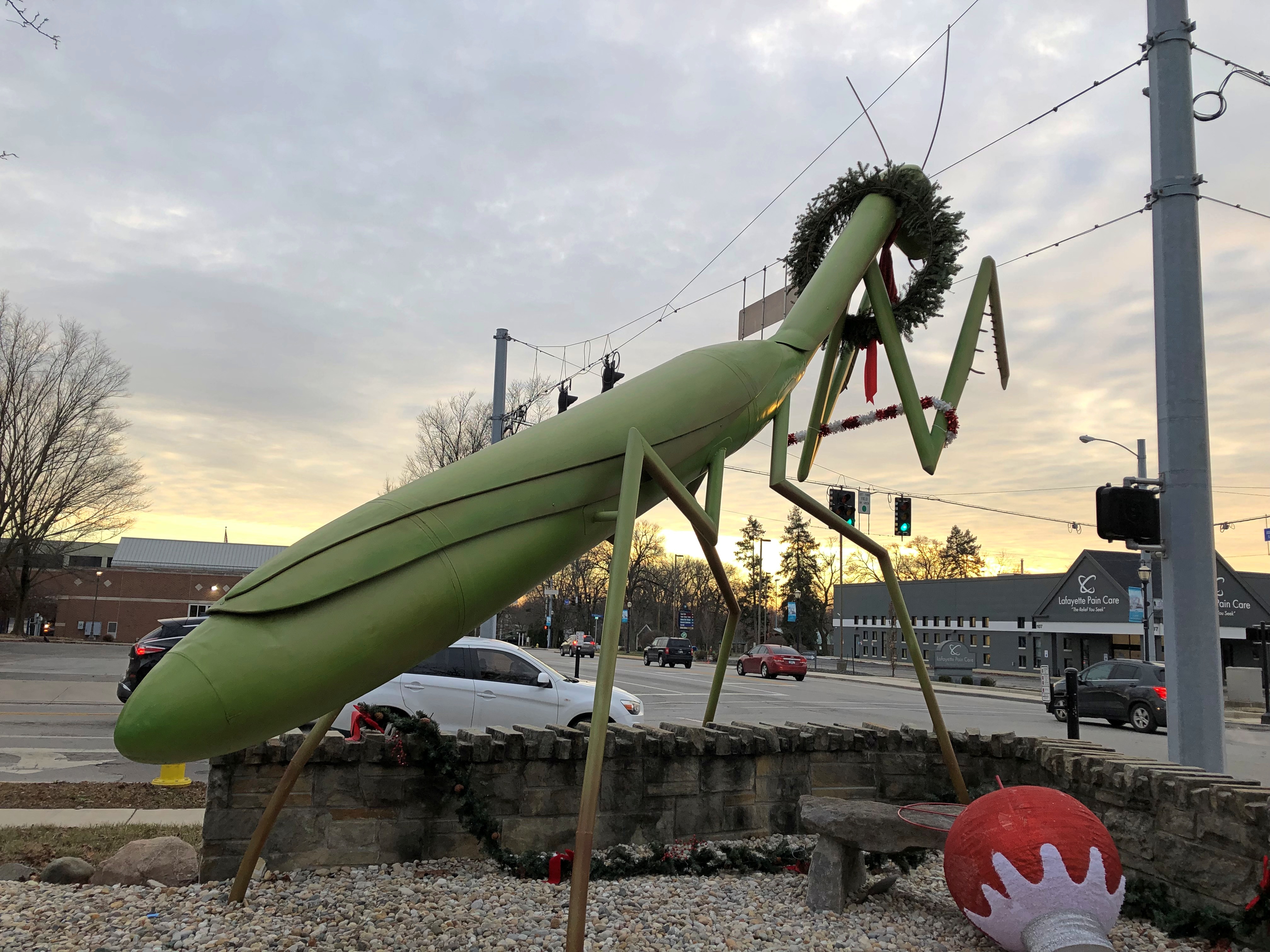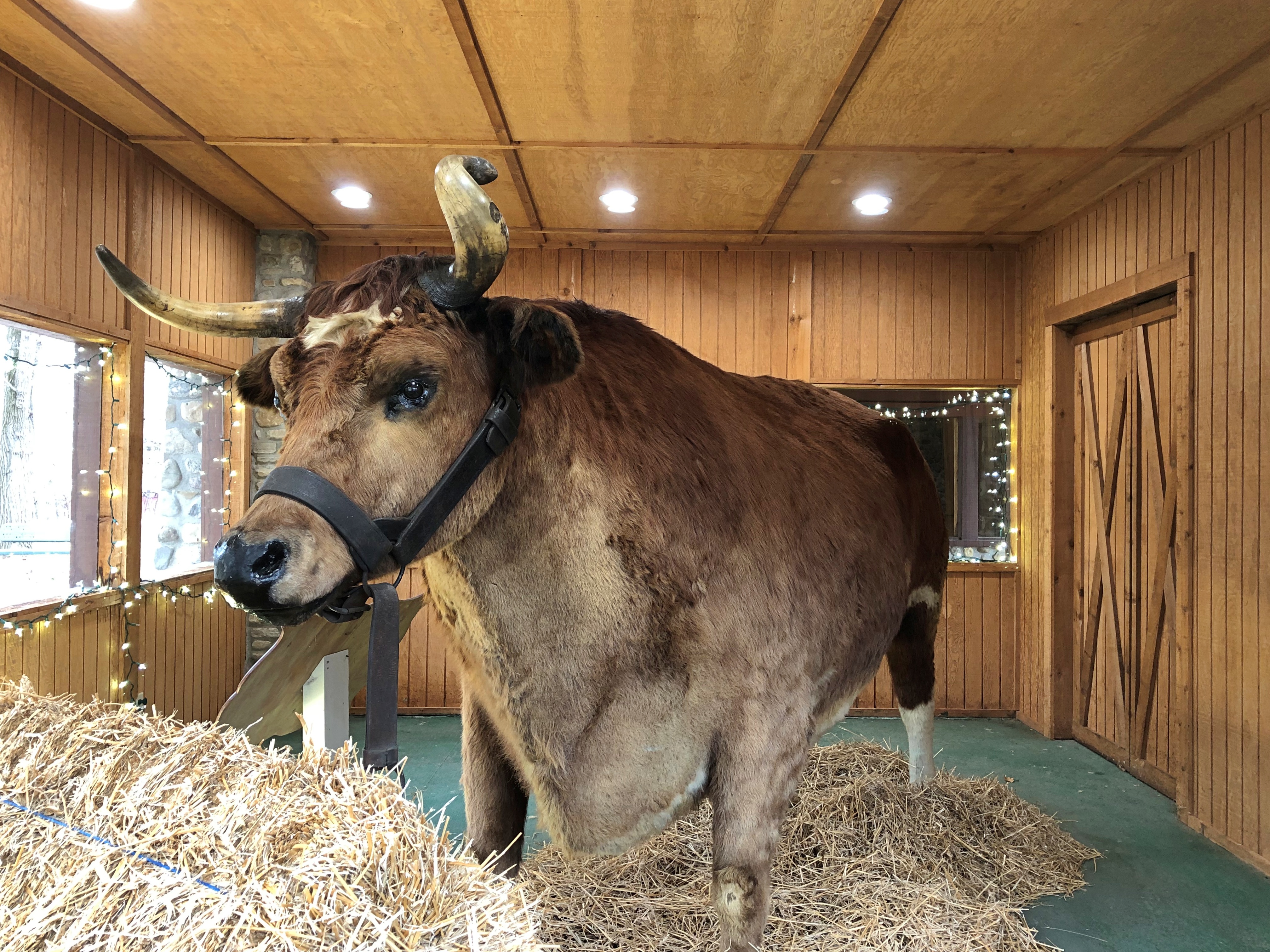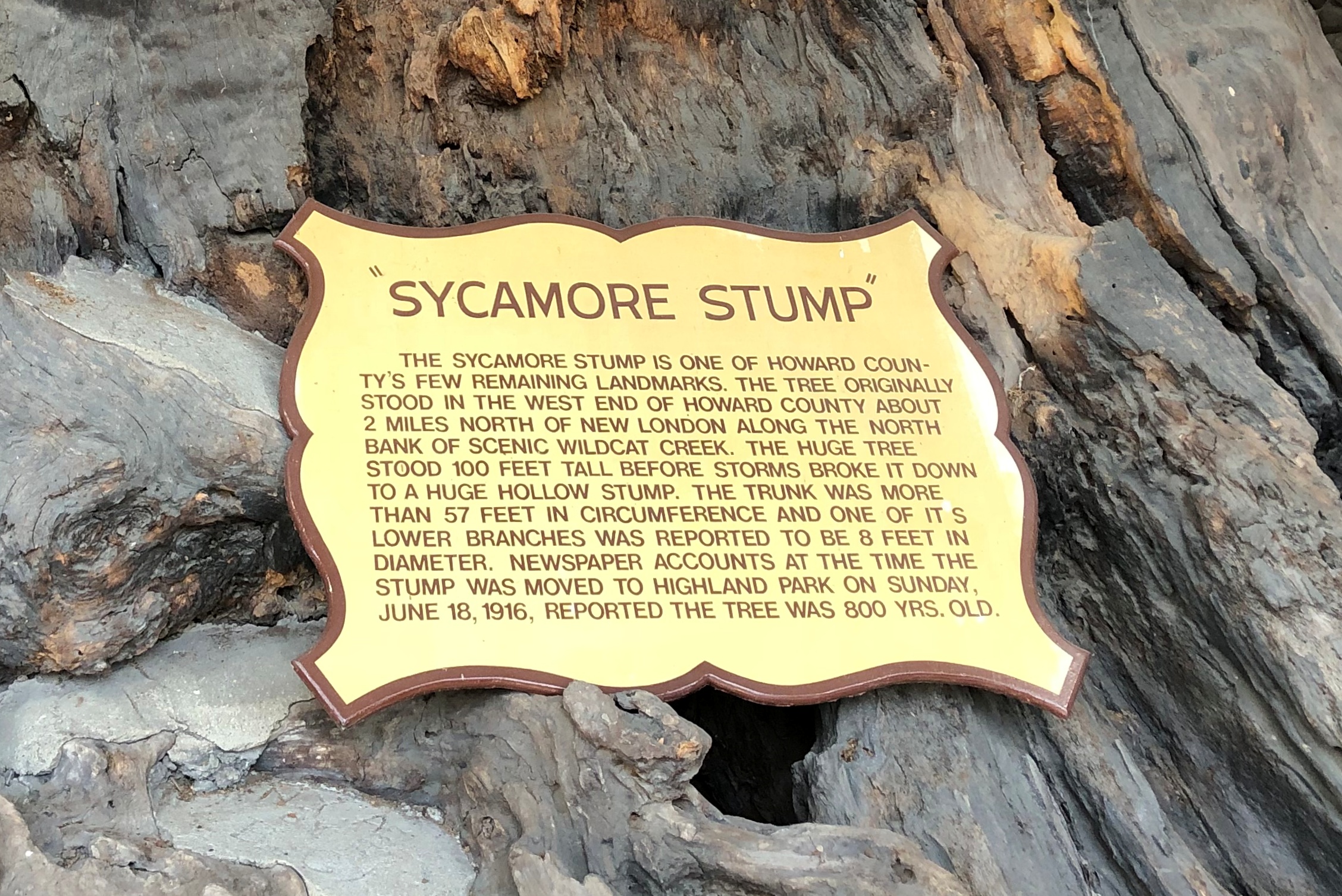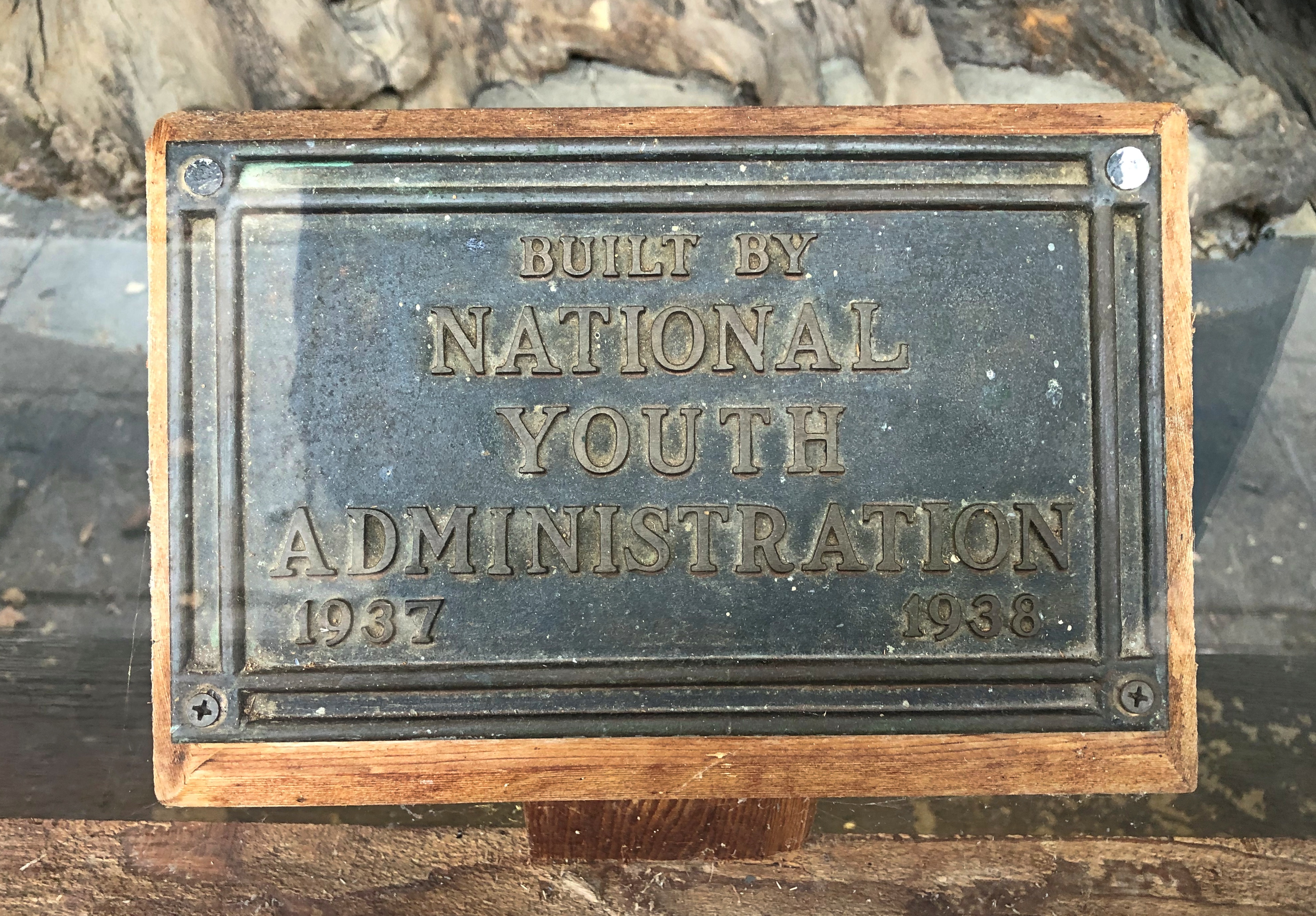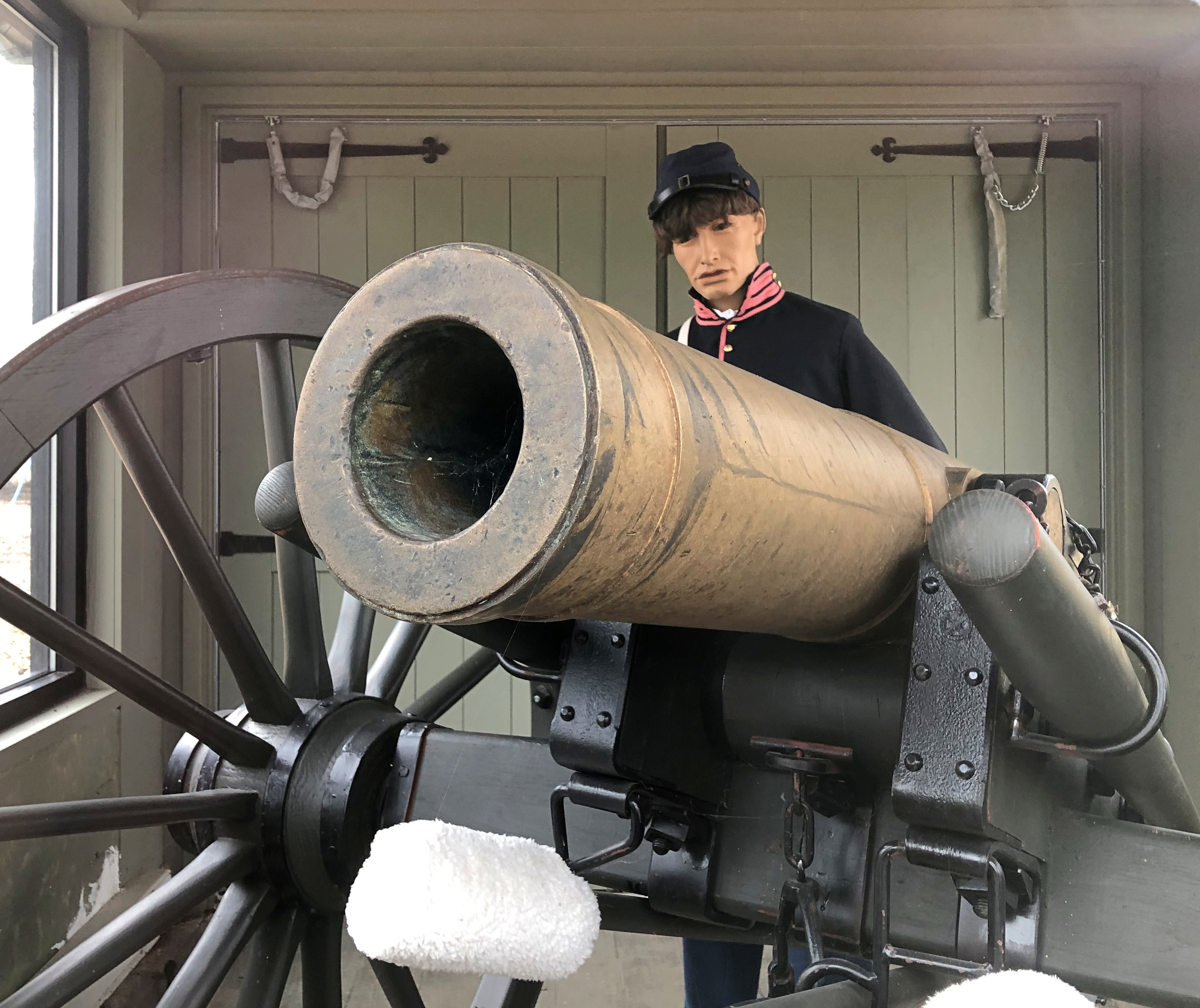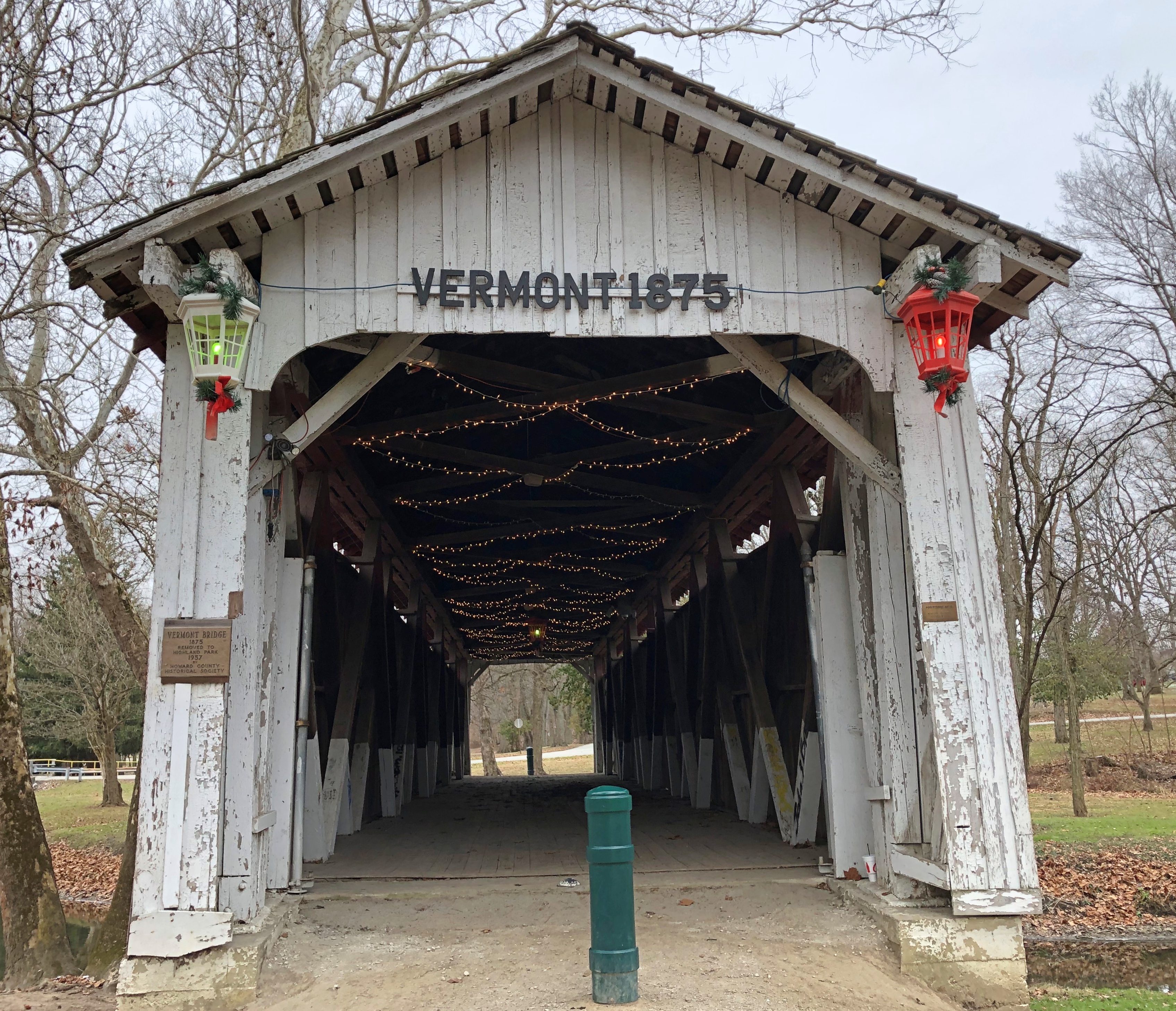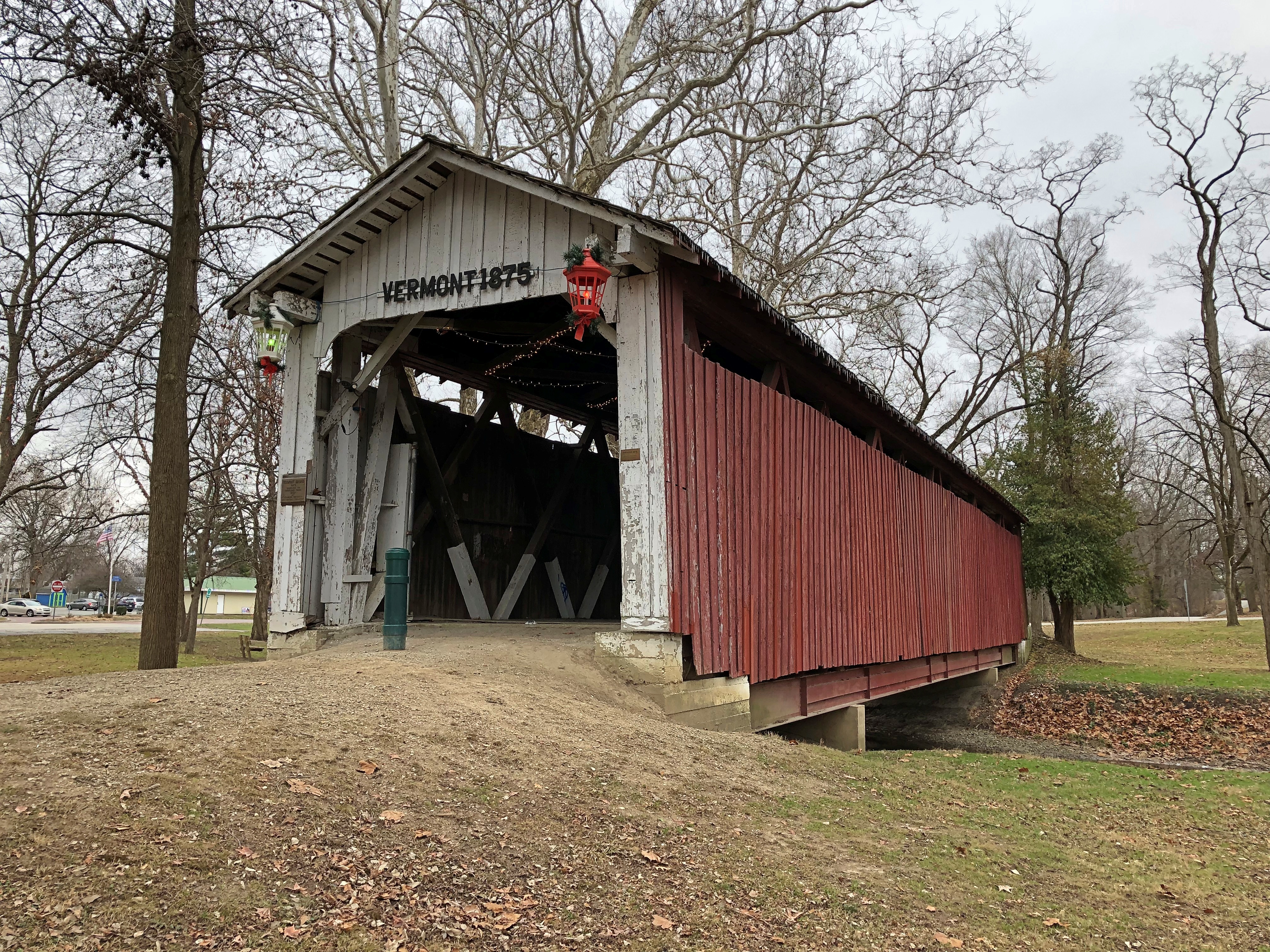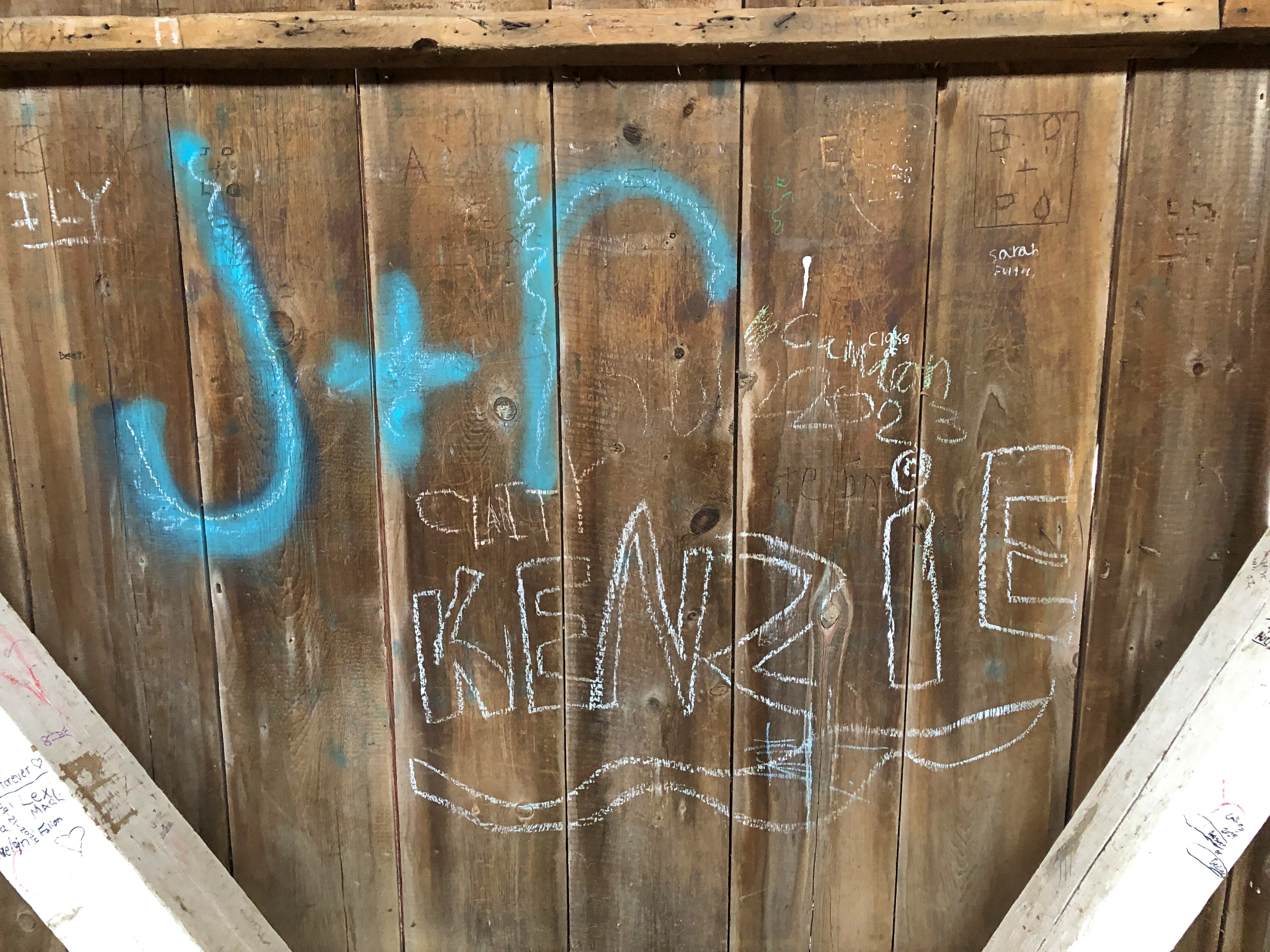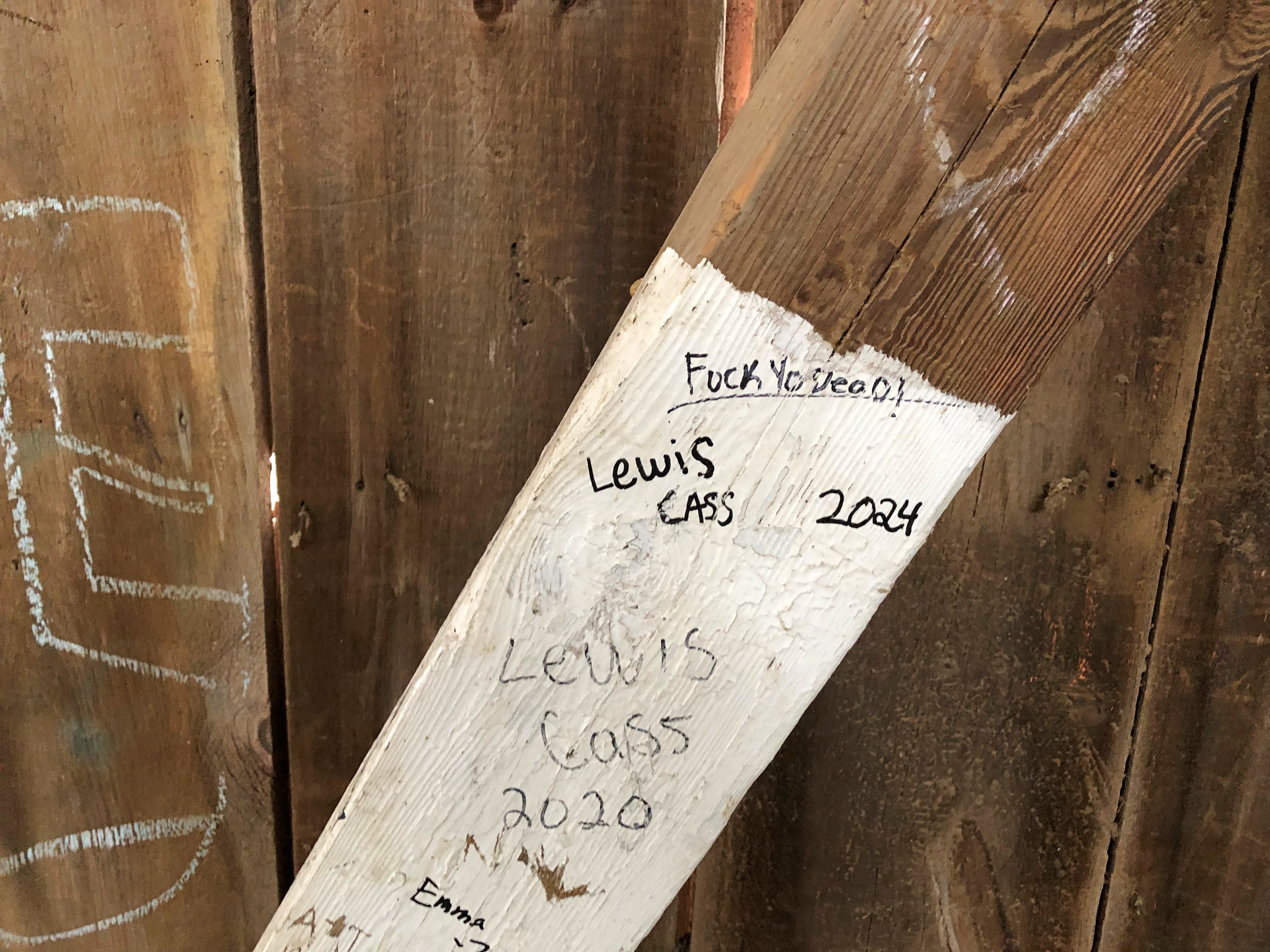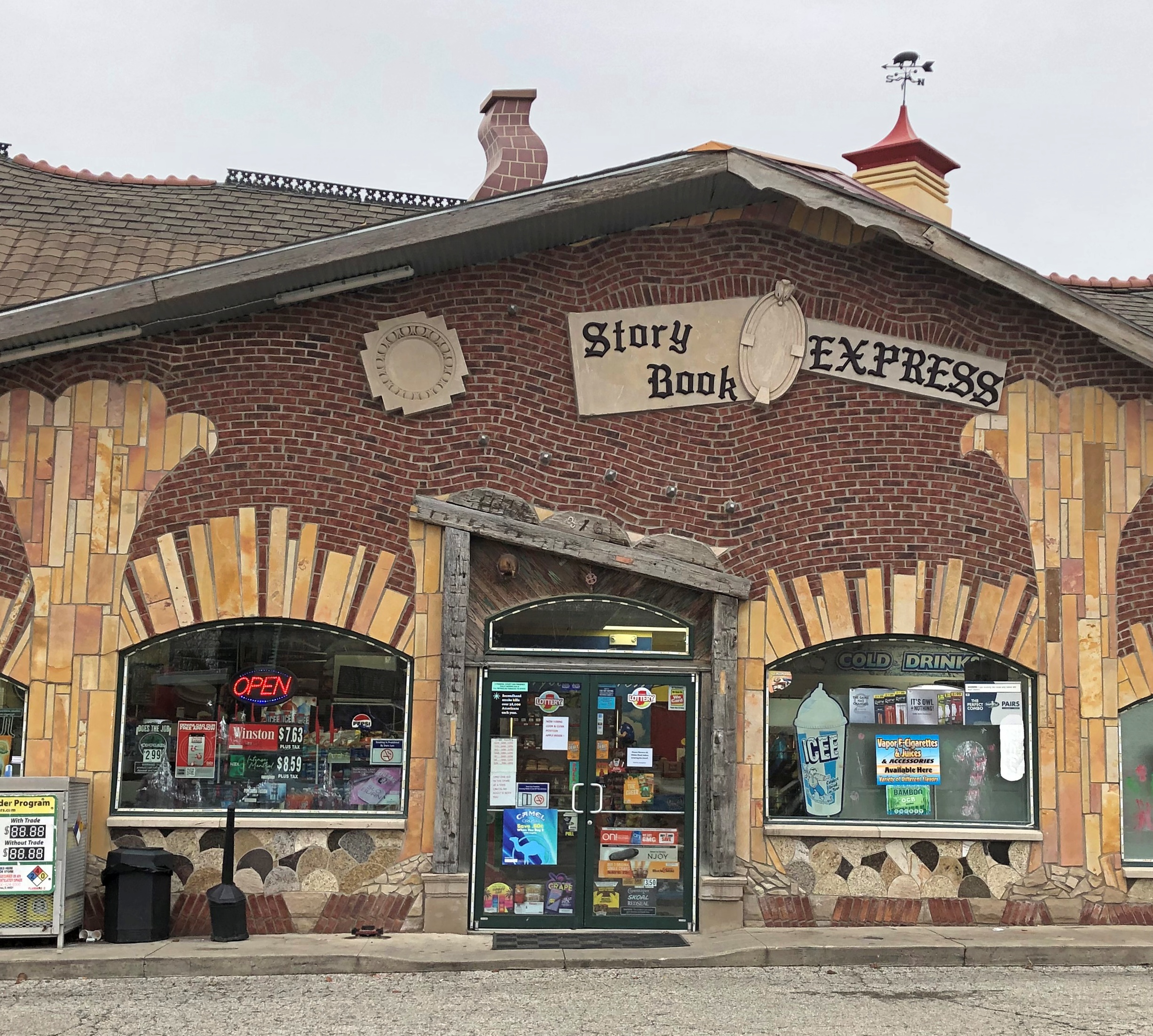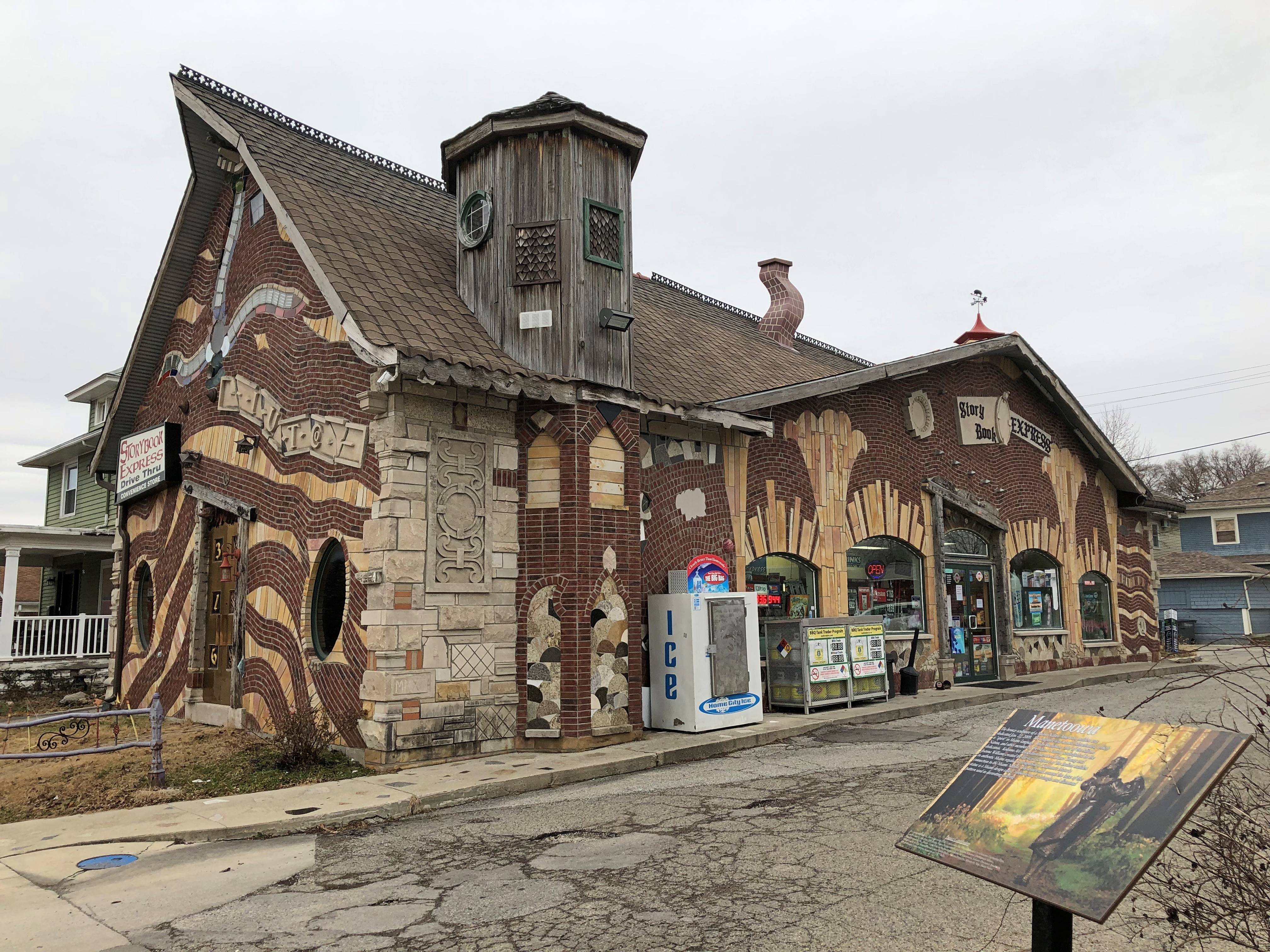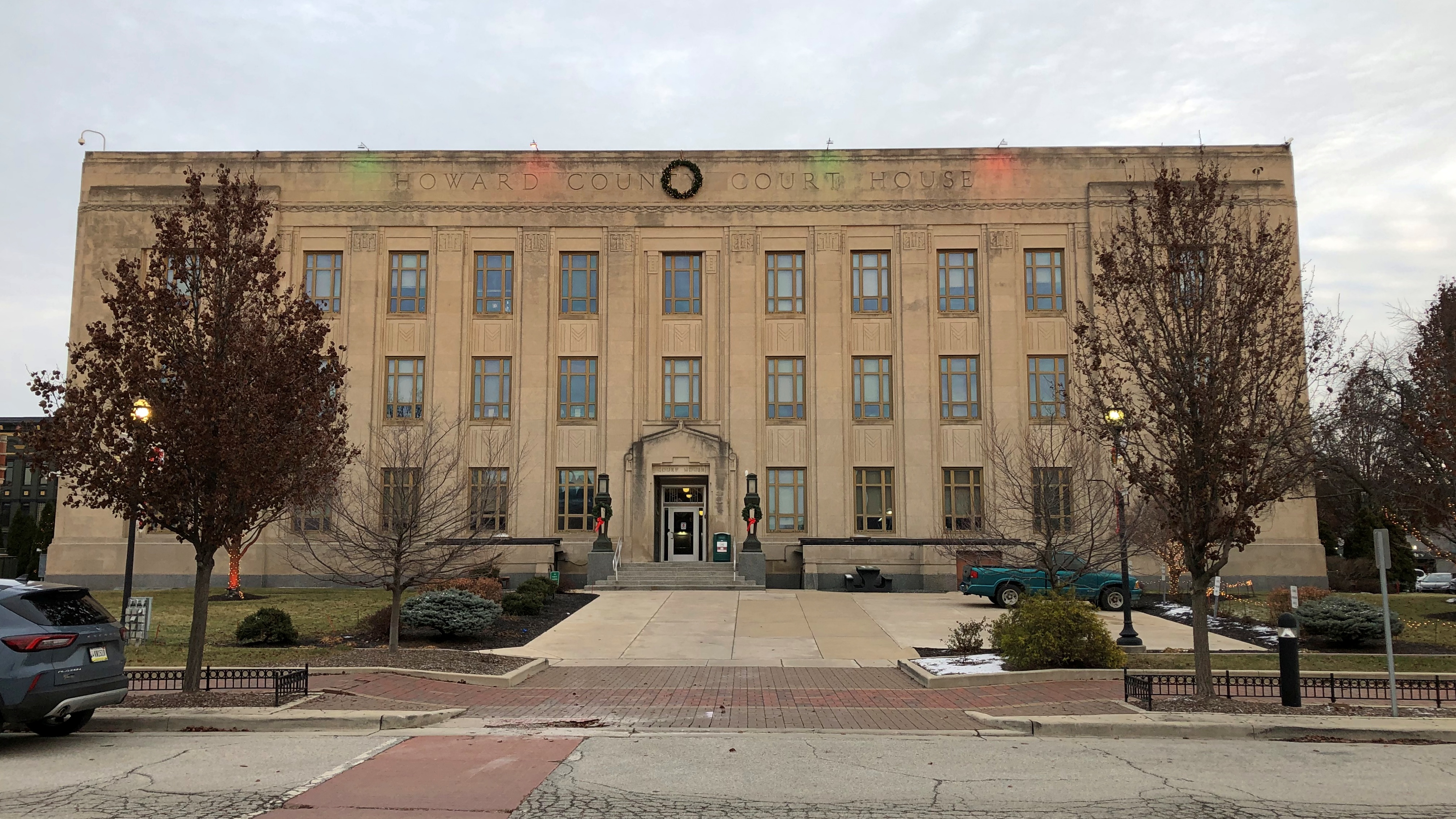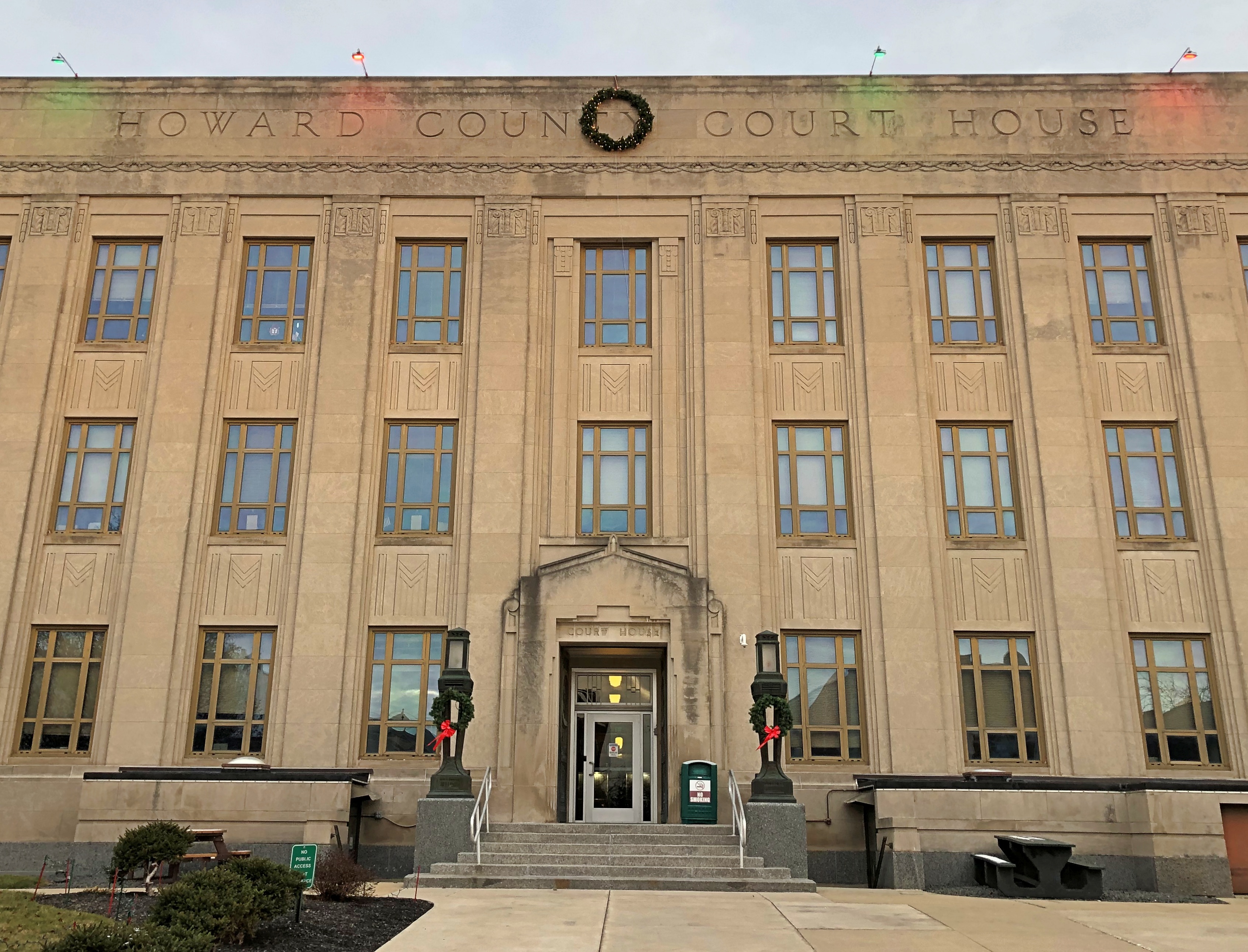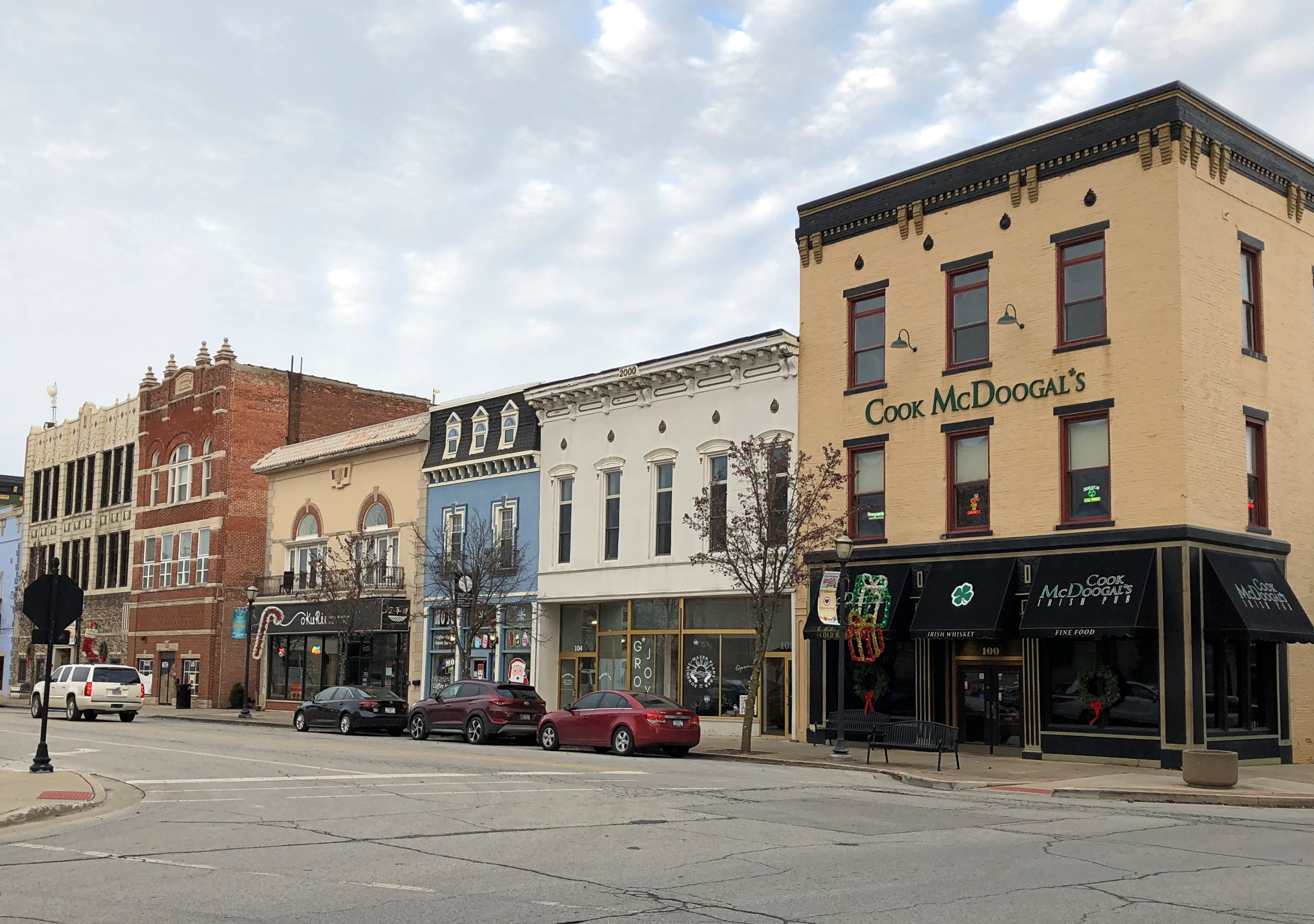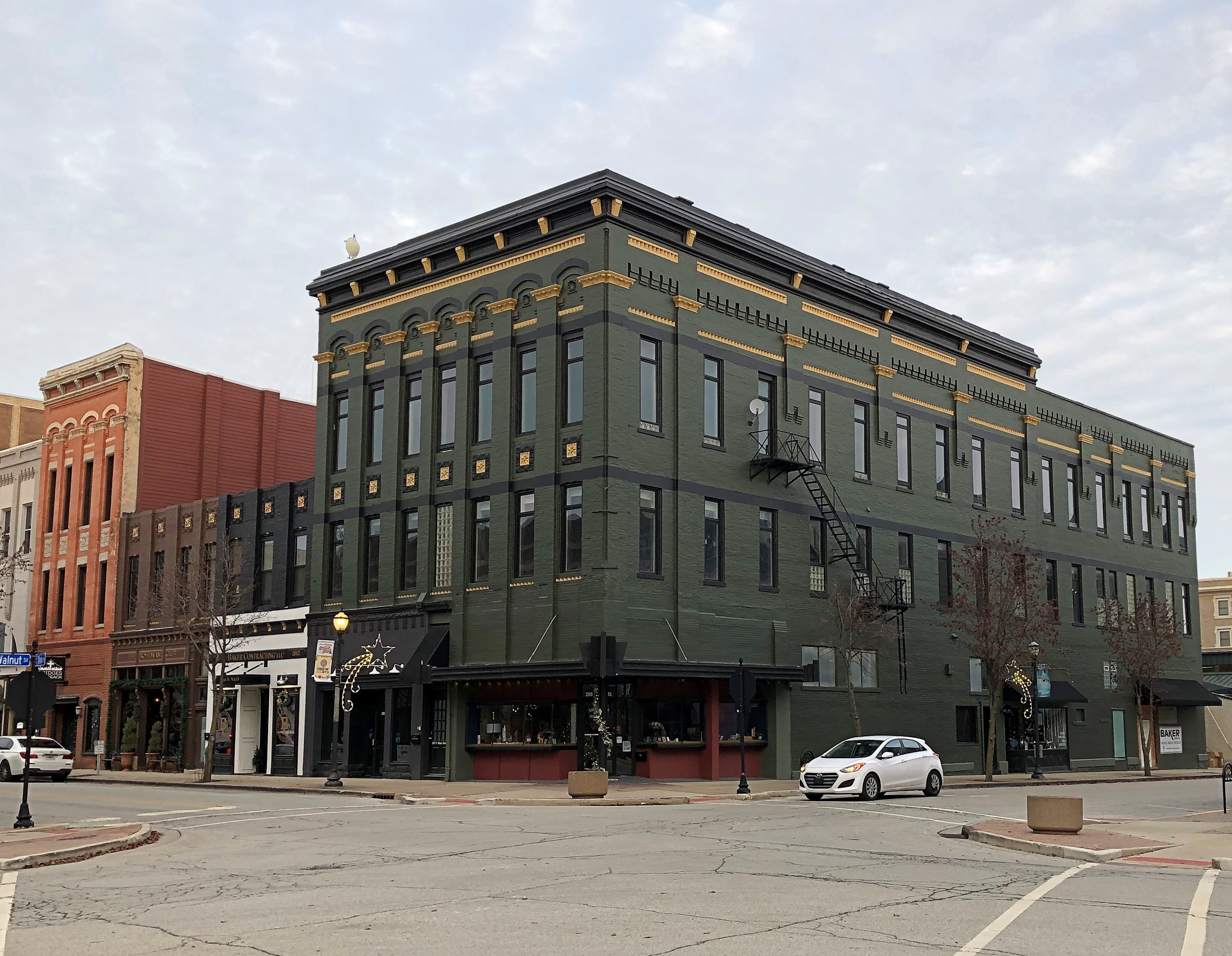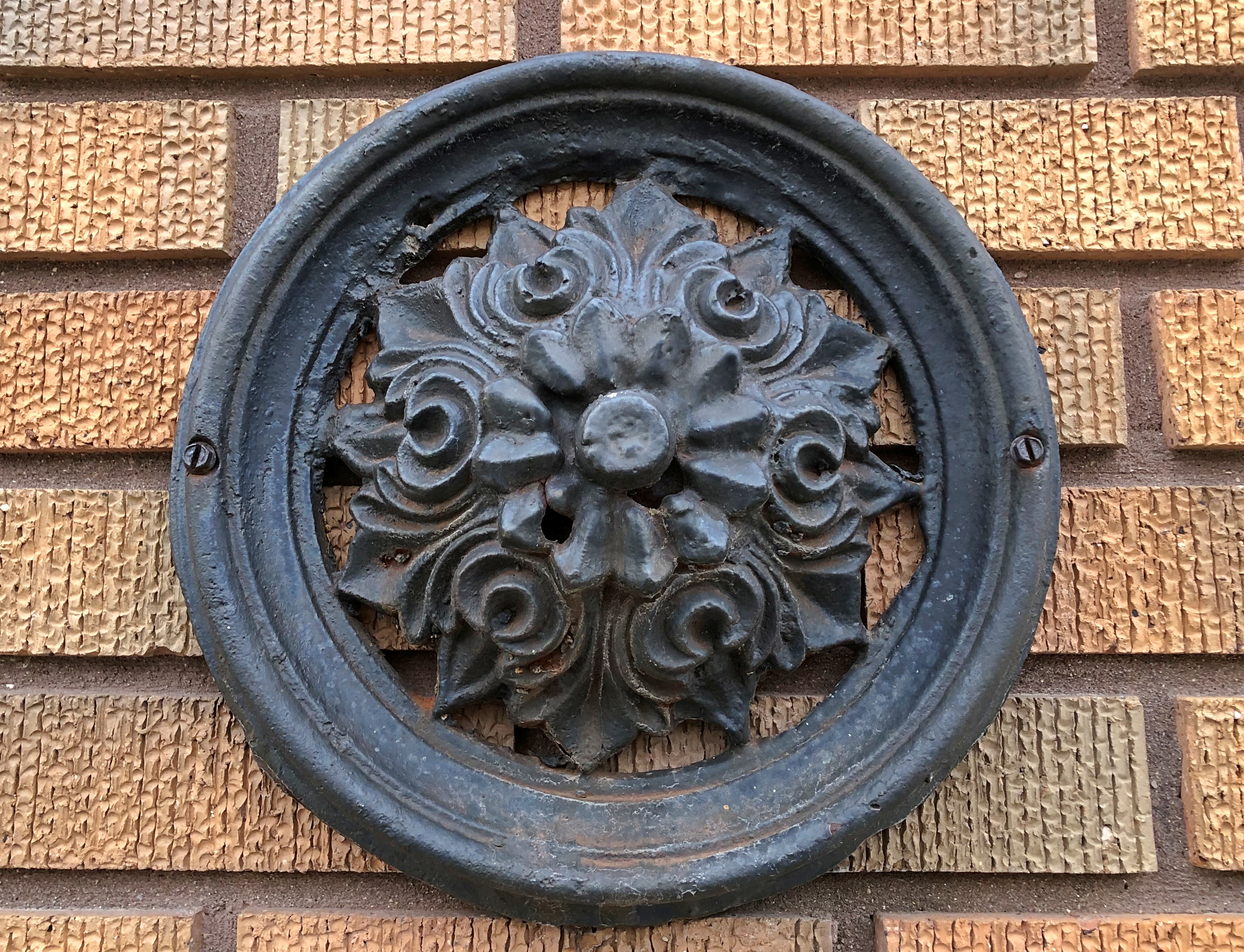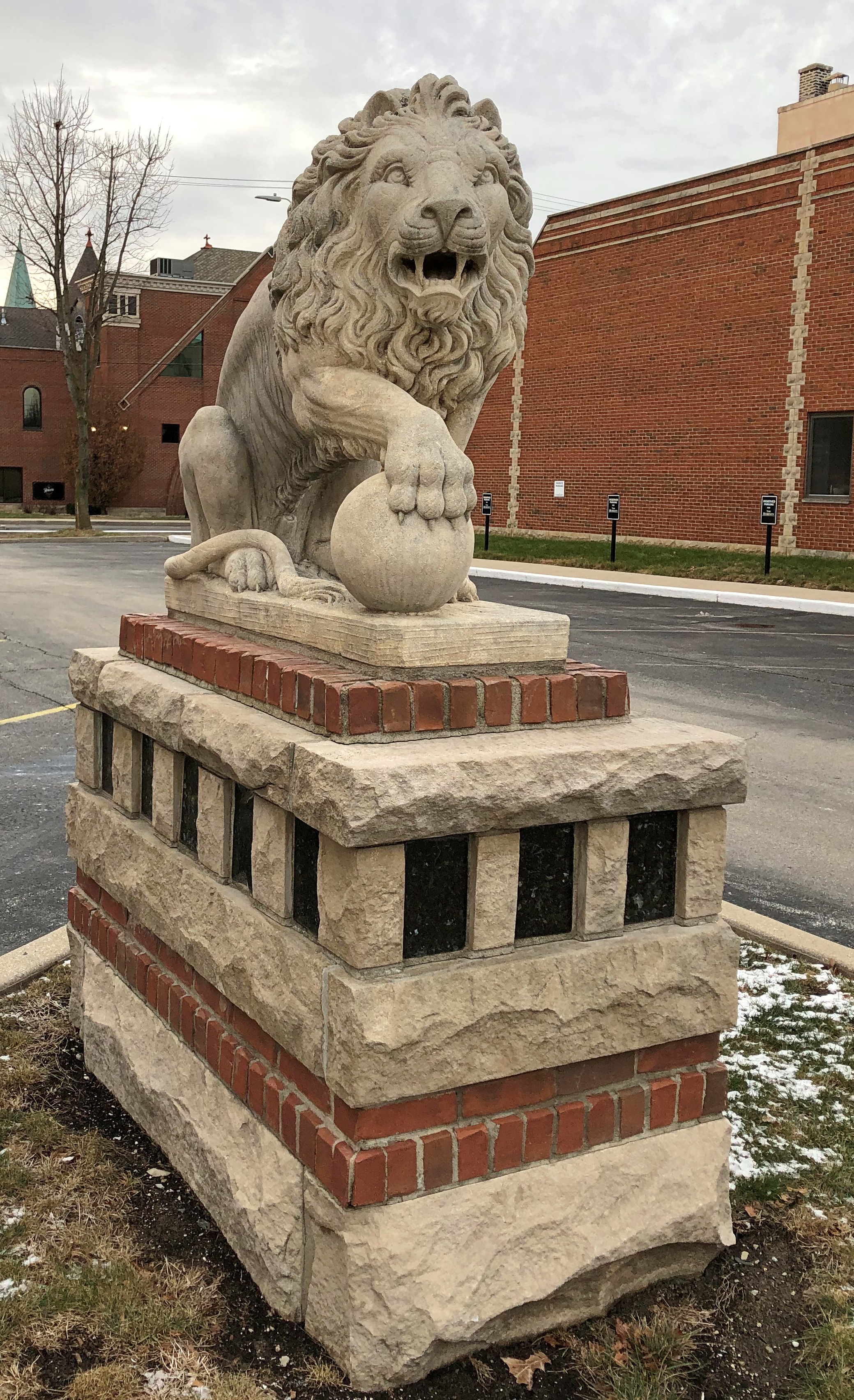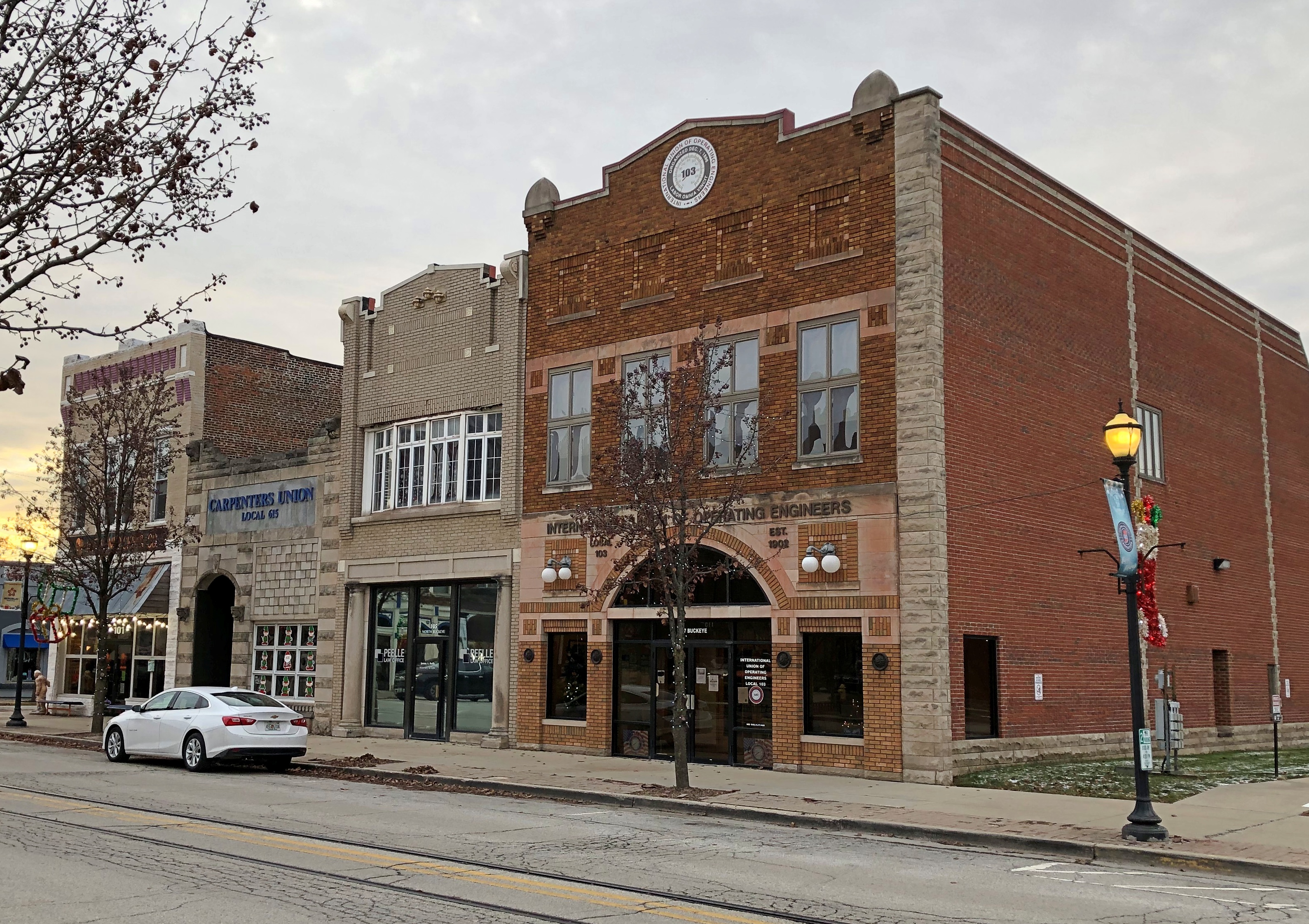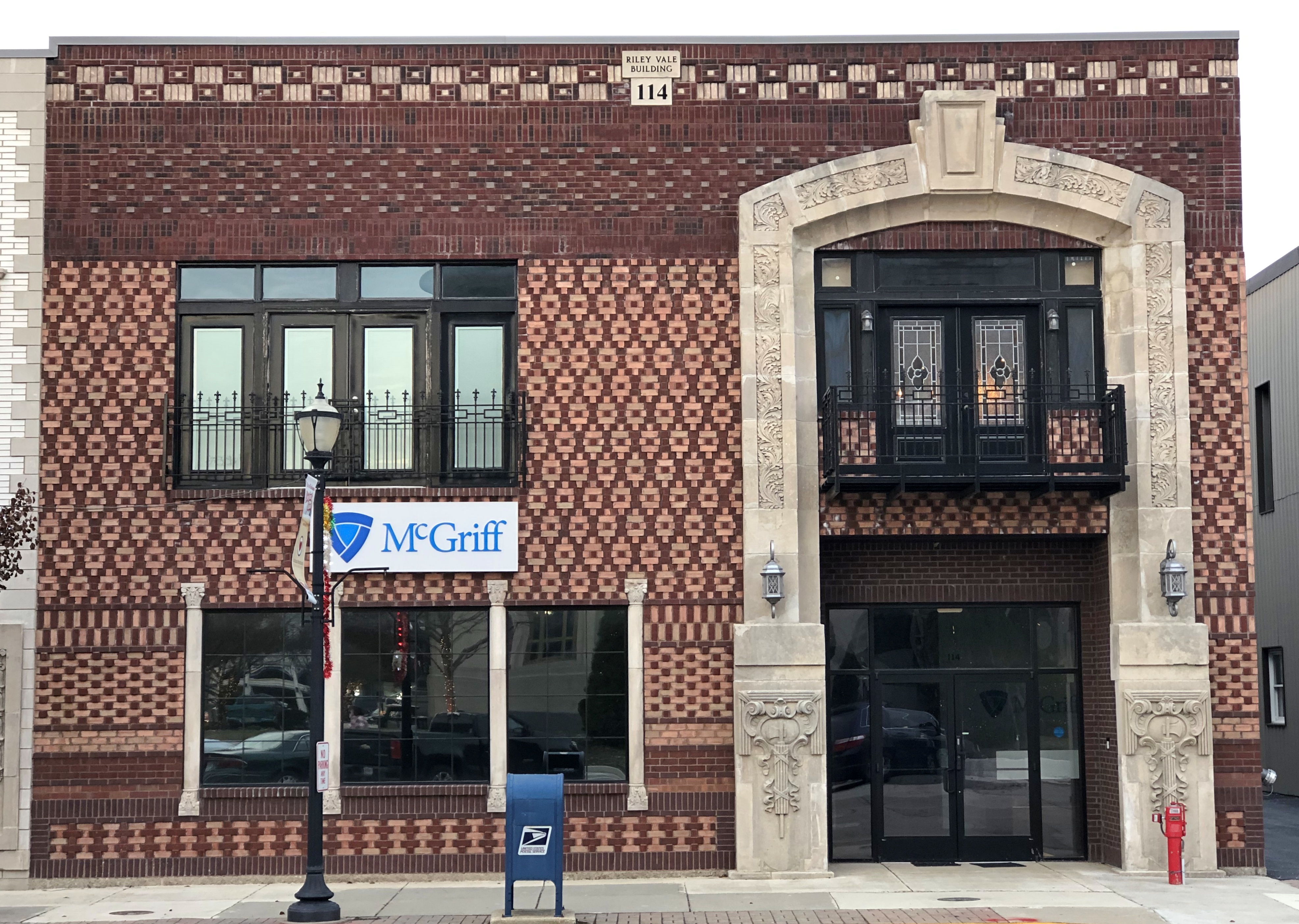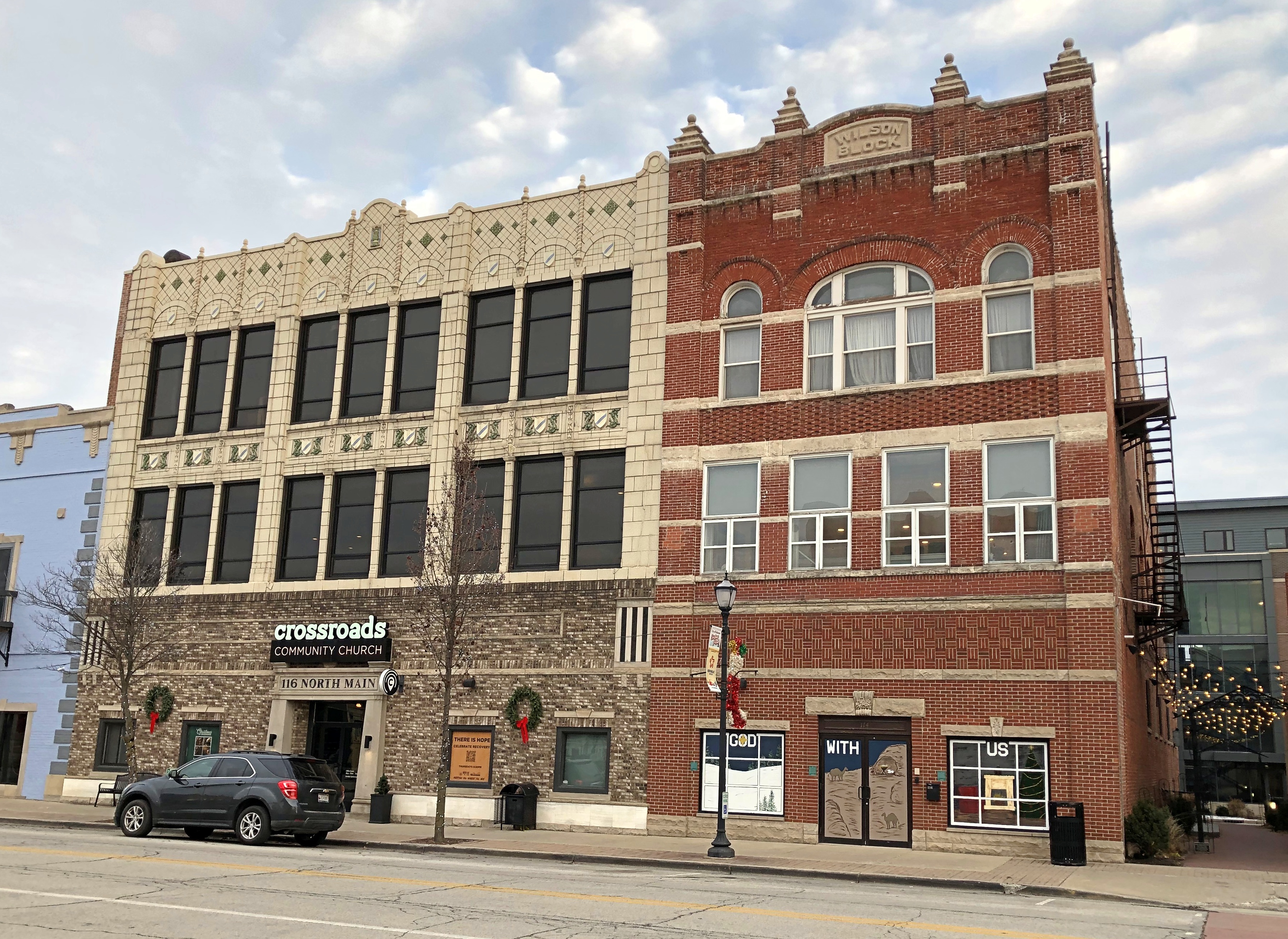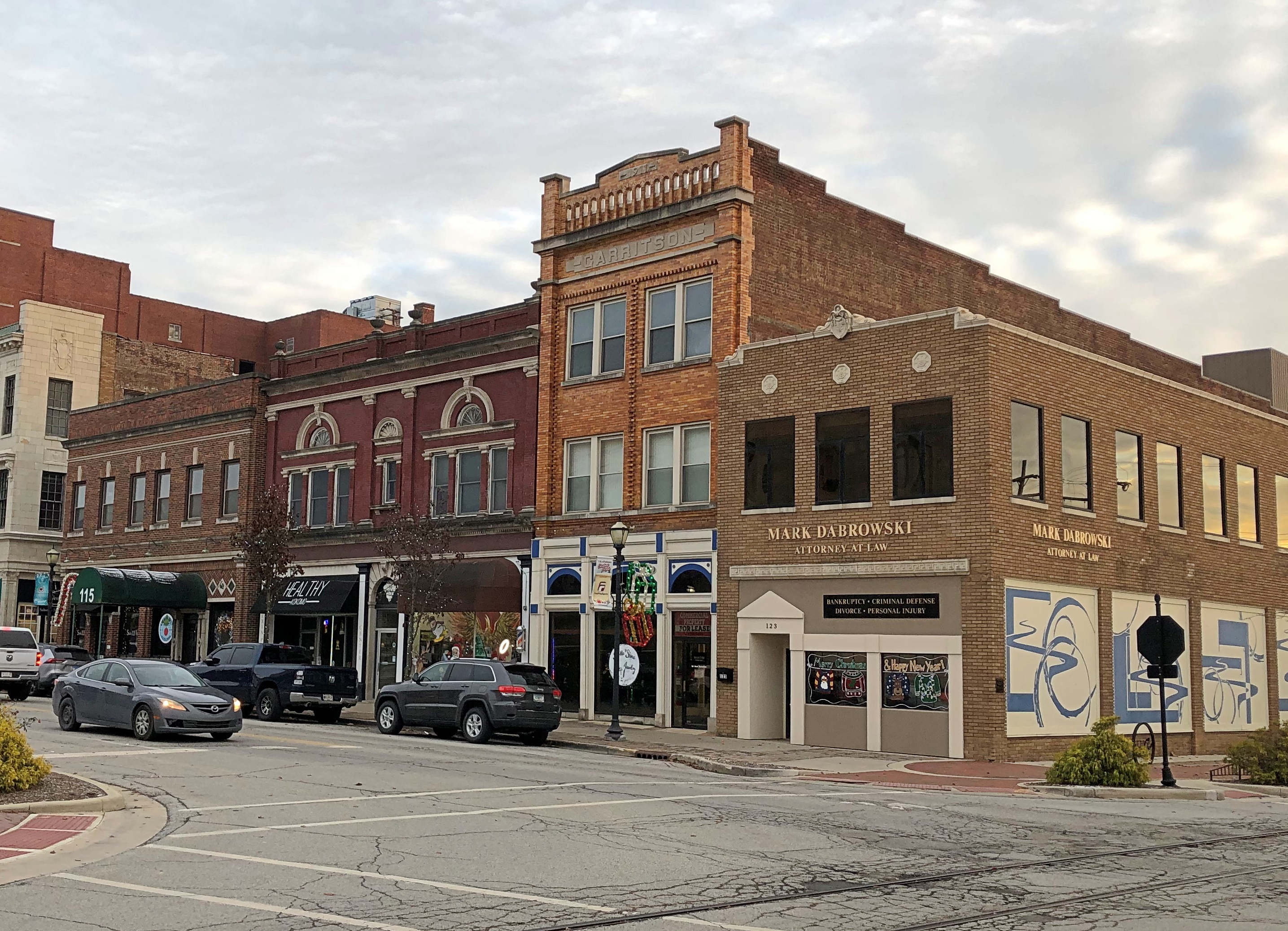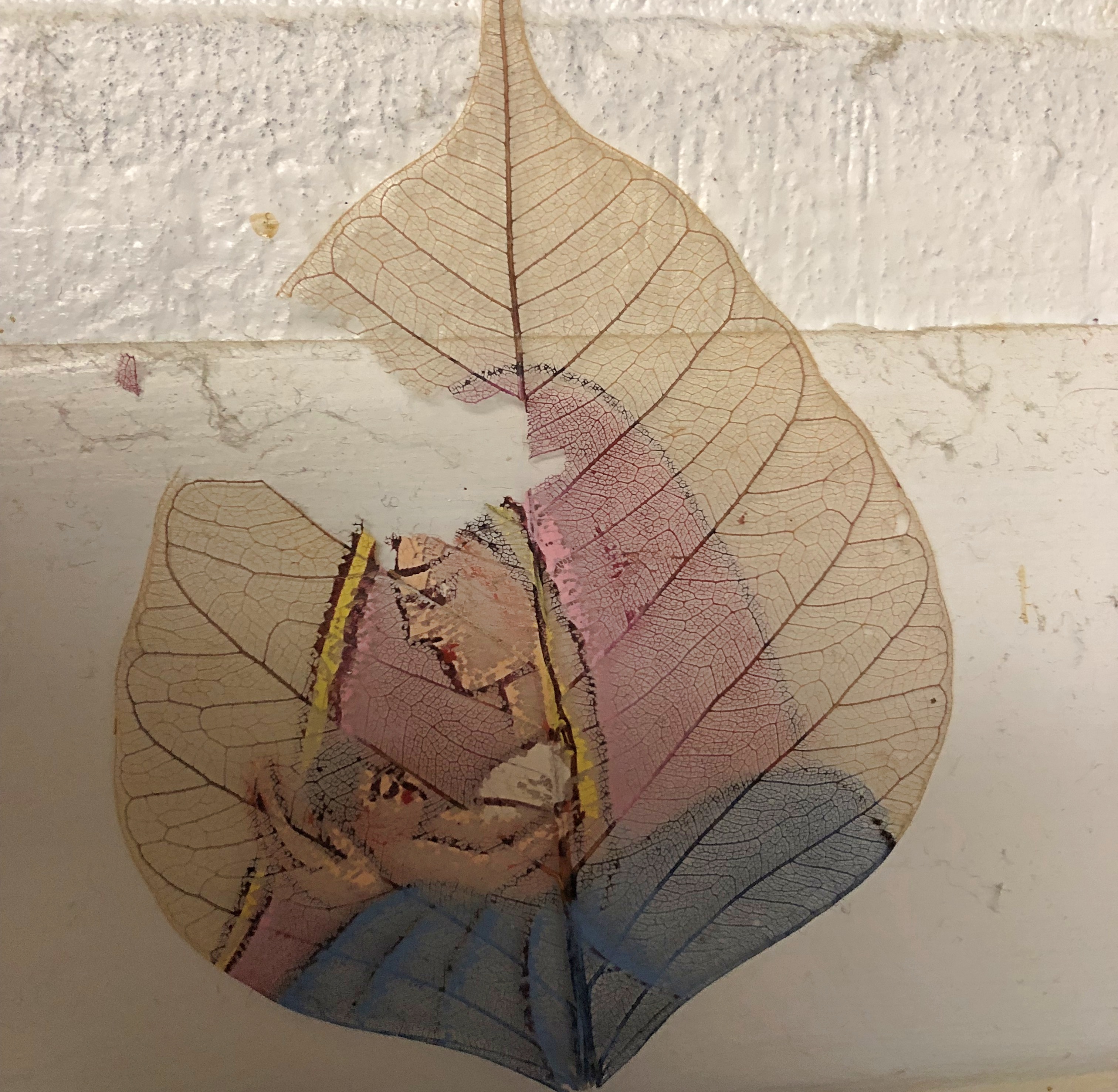“How far is it to the Metro station? I mean, to walk?” I asked the clerk at my hotel in Dubai, a property not far from the airport that I had picked for that reason, and because it was supposedly close to a Metro station. Like many places, that is what Dubai calls its part elevated-part subway system. My maps had given me some clue about the walking distance, but it’s good to check with someone who might have personal knowledge.
Or not. “Five minutes,” she said, offering a standard answer. That actually wasn’t too far off in the grand scheme even of a single day, since the walk took about 10 minutes. In late February, that difference doesn’t make much difference, but I bet it does during the hotter months. Beginning soon, maybe?
I had a hankering to get around Dubai by Metro. So each time I rode the system, I first did the 10-minute walk along a moderately busy street, part of whose traffic was Emirates employees arriving at work, since the airline’s HQ is nearby. Coming to Dubai, I flew Emirates for the first time. It has a solid reputation among travelers, or at least did the last time I thought about it, but in any case I can report that the Airbus flight was good, including a number of small amenities (such as nice snacks), though inevitably legroom was a little short for a six-foot fellow such as myself. The flight attendant uniforms are pretty spiffy, though.
Travel on the Metro involves a Nol card. Once I found the right machine at the station, those were easy to buy and not particularly expensive. Nol, I understand, means “card” in Arabic, so what I acquired from the machine was a Card card good unlimited rides for 24 hours, total cost about $6, which one pays in UAE dirhams.
During my transit excursions, I had to make sure not to board the gold car – a single car upfront at a higher price – nor the women-and-children only cars on the rush hour trains. I almost boarded one of the latter, but I realized my mistake before I did. Not sure whether doing so would have merely been embarrassing, or whether transit cops would have shown up for a mandatory chat in a place that has no Fifth Amendment.
Everything about the Dubai Metro was easy. The only way it would have been more frictionless would have been no charge at all, which isn’t going to happen. As a relatively new system, built by a consortium of mostly Japanese companies and only in operation since 2009, the cars are clean and new, the signage (Arabic and English) is fairly clear, and I never had to wait long for a train.
On the other hand, most of my travels on the longest of the two lines, the Red Line, involved crowds as thick as any you’d see in rush hour New York or London or Tokyo. As diverse, too, though more heavily skewed toward South Asia, where most of the UAE’s non-citizen residents come from. A fair number of tourists packed in the cars as well, many of whom were from Europe, but probably also India – to judge by the flight from Delhi, Indians who can afford it take holidays Dubai. Another detail hints at large numbers of Indian visitors: my hotel room toilet came equipped with a spray nozzle.
After a few rides on the Red Line, I noticed that the crowd wasn’t quite like any other transit crowd in one way. Until the last few stations on the line, few people actually got off. People would get on and never seem to leave, station after station. I had time to reflect on that more than once as I stood for about 15 stations, waiting for someone to leave a seat. (I don’t look old enough for anyone to offer one, though I feel that way sometimes.)
In most subways, unless it’s absolute peak rush hour, there will be turnover from station to station. But not much in Dubai, at least according to my small sample.
Later I thought of a possible reason. Though there are two lines (and eventually will be a third), the Red Line is the main one across miles of the city, roughly paralleling the coastline. I can’t imagine that most low- and mid-level workers live that near their places of work, and so the Red Line forms one link in their commute, which also includes buses on one or both ends.
One exception was the Burj Khalifa/Dubai Mall station. A lot of people got off there. They were going to the mall. I did too. I’d read about the mall, known as one of the larger ones in the world, and one of the posher. I also knew that, for the last three decades or so, malls have been developed all over the world, including in places where they are big new hits, such as in China, Southeast Asia, India, Saudi Arabia and other places (Dubai, for instance), and not relics of a more expansive time, like they might be North America. So I figured it was worth seeing.
I noticed on the map that an elevated walkway goes from the station to the mall. I didn’t think about how long it might be. Soon I found out. One source says half a mile. Having walked it more than once, I believe it. Moving walkways made things a little easier, but the first time you go through, each section of the walkway makes you wonder how many more there will be. Close to the mall itself, but not in the mall, you go through a passageway lined with snack shops and souvenir stores. Leaving, I found my entire supply of Dubai postcards at one of the latter, including stamps. International postcard rate: 3 dirhams. US 82 cents, not bad.
Before long you reach the entrance to the mall. I should have paid closer attention at that moment. Actually, I thought I did. But no: it would take a while for me to find that passage again, and my exit from the mall.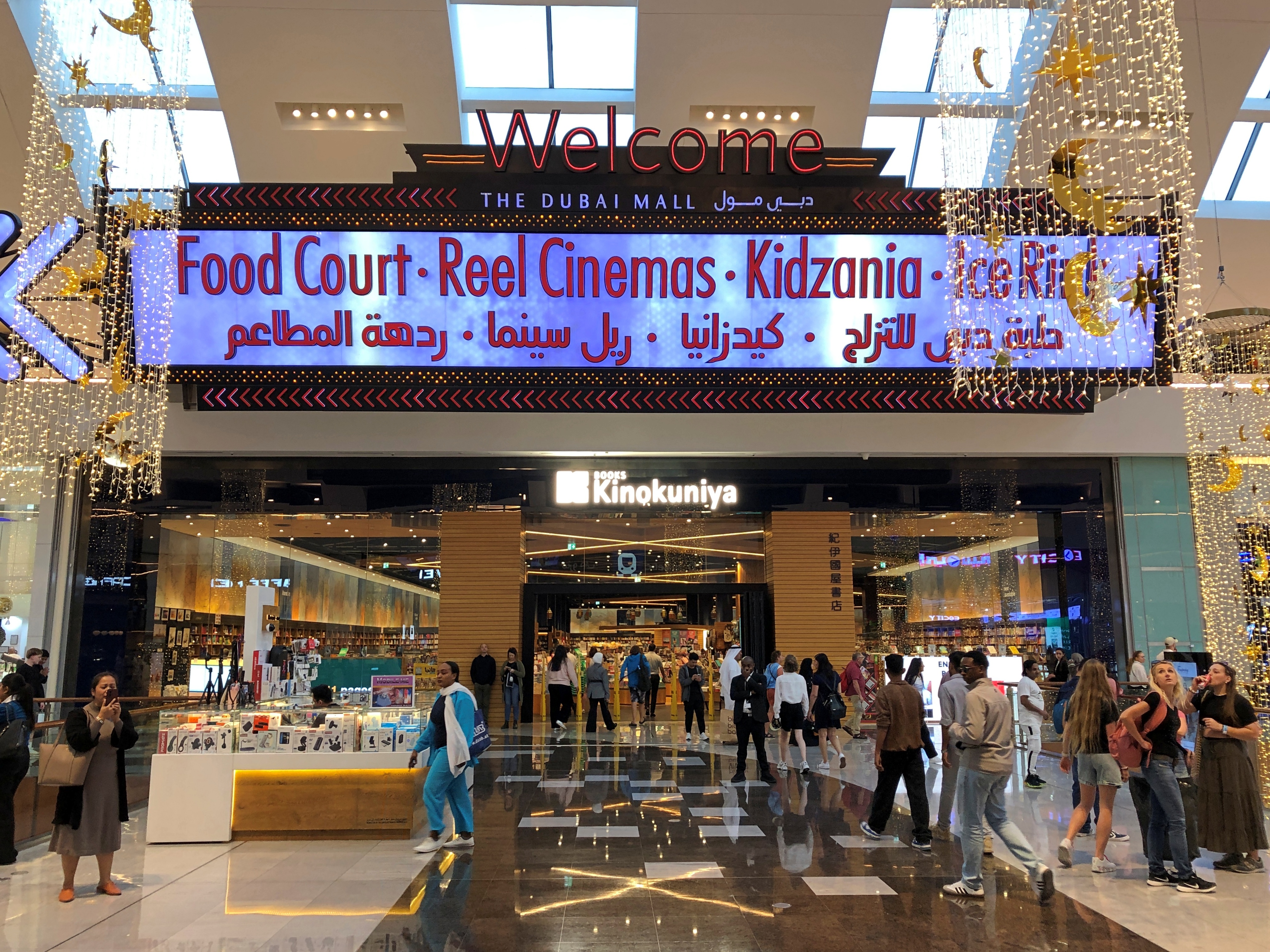
I spent maybe three hours wandering around the mall, unusual behavior for me. But part of the time I was lost. Not lost in the sense of they’ll find my bones somewhere, but rather disoriented for stretches of time. I expect the design encourages just such a reaction.
There are four full shopping floors and not a lot of right angles, and a sort-of oval shape overall, with extra branches snaking off in various directions (this is just the ground floor). Wayfinding isn’t bad, but the endless distractions in the stores and among the people passing by make it easy to miss an important directional sign. Most importantly: the place is huge.
Measured by gross leasable area – at 4.3 million square feet – Dubai Mall is the seventh largest in the world, according to Luxe Digital in 2024, though its floor area is 12 million square feet. That is, for every square foot of retail space, there are nearly two square feet of everything else. There is a lot of everything else: sweeping common areas, all bright and immaculate, a gargantuan aquarium, an ice-skating rink, the entrance to the Burj Khalifa observation decks, possibly two food courts, a thing called KidZania and naturally a multiplex cinema. And more. That could be the property’s informal motto: There’s Always More!
As for the stores, there are about 1,200 of them, many familiar (indeed, U.S. and European), others less so (Middle Eastern, South and East Asian, and some of the Euro-brands). Every upmarket brand you’ve ever heard of is going to be there, and then some. Many cluster in a section of mall called Fashion Avenue, which is big enough to be a standalone shopping center. Mid-market retailers seem to thrive in the mall as well, though some of the more everyday sorts of stores, such as a large grocery store, are to be found at the lowest level. There is an entire section of the mall called Chinatown, sporting Chinese retailers and restaurants and décor. Nice use of lanterns and neon. Also, supposedly you can play various sports on the roof of Dubai Mall. I didn’t look into that.
The mall was busy, and just as multicultural as the subway or the rest of Dubai. Signs tended to be in four languages: Arabic, since this is an Arab country, English for almost everyone else, plus Hindi and Russian, which must represent two large shopper blocs. It’s only three-and-a-half hour flight from Delhi, probably the same from Bangalore and certainly less from Bombay. As for Russia, much of Europe is off limits these days, but the UAE apparently isn’t; and maybe some Russians with the wherewithal are sitting things out in Dubai. Just speculating about that.
Slightly detached from the mall is the Souk Al Bahar, another 100 stores and a posh place indeed, done in “Arabesque” style (the mall’s term). It wasn’t nearly as crowded as the main mall, but I expect people who do go there are probably prepared to spend some serious dirhams. Me, I was just looking around, and as usual looking for a restroom. Time Out Dubai is in the souk as well, its restaurants tucked in a warren-like area, and so giving off a different vibe from the high-ceiling space occupied by Time Out Lisboa, though I’m sure the food is just as good.
Next to the mall and the souk is an enormous artificial pond, home to Dubai Fountain, which pushes water as high as 500 feet into the air periodically, with water jets choreographed to music and, at night, colorful lights. I didn’t know this before: It is a WET design – the same company, WET, that did the Bellagio fountain in Las Vegas and a lot of other fountains in a lot of other places.
Not long after noon, I surveyed lunch options at the end of the mall I happened to be, which was near the souk and the fountain. One option that had seating outside, within view of the fountain, was Five Guys. So lunch was al fresco that day, February 26, a serving of Five Guys fries and a drink, which is definitely enough. As I enjoyed my taters, some of sort of rousing Middle Eastern tune struck up, and the water show began. Nice work, WET.
I wasn’t lost all the time. Much of my visit was pure wander: a peek at store after store, level after level, up and down escalators, and looking for a restroom (one I visited twice was marble-and-mirror swanky, with more than one attendant in coat and tie, none of whom asked a tip, unlike India). I also passed by most property’s entertainment features, with none more impressive than the aquarium, even for those who don’t pay to go in. Officially, it is the Dubai Aquarium & Underwater Zoo. Shoppers just wandering through the mall can see one wall of the aquarium.
“Dive into an amazing aquatic world at Dubai Aquarium & Underwater Zoo — home to thousands of aquatic animals, over 140 marine species and a 270-degree walk-through tunnel,” says the mall’s web site, “Located within Dubai Mall, Dubai Aquarium & Underwater Zoo features a 10-litre tank [sic] containing more than 400 Sharks and Rays, including Sand Tiger Sharks, Giant Groupers and a wide array of amazing marine life.”
I’m sure that was a simple typo, but the absurdity of fitting all those sea creatures into 10 liters makes me smile. The actual size would be 10 million liters, a number I can believe, now that I’ve stood next to the two-story wall of glass holding all that water in. The sight is magnificent: enormous swirls of undersea life, schools and large fish and sharks in motion, as colorful as can be, and an attentive collection of shoppers, kids and adults, clearly enjoying the spectacle.
By about 3 pm, my energy was at a low ebb, so I made my way to Reel Cinema, the multiplex, to find a place to sit for a couple of hours. That is how I came to see Captain America: Brave New World in a nearly empty theater near the shores of the Persian Gulf. (There were a few boys in a row behind me: the intended audience.) The movie was the only one I didn’t mind seeing, at a starting time that wasn’t too far in the future. I suppose I could have taken in a Bollywood offering, just for the novelty of it, but I wasn’t feeling it.
The only modern Captain America movie I saw before was – something or other, but it was actually set in the 1940s. That’s the Captain America I know, vaguely. He fights Nazis. Brave New World has a now-ish setting and someone else is Captain America (both the actor and the character) and the villain is someone or other out for revenge for some reason or other. My interest in this particular franchise, and pretty much all of the “Marvel Cinematic Universe,” is fairly low. As in, next to nothing. The characters discussed, from time to time, things that had happened in previous movies, but I couldn’t get interested in that, either.
Still, the movie was fun to watch sometimes, such as the mano-a-mano fight scenes or the brisk violations of the laws of physics, or, come to think of it, the biological impossibility of Harrison Ford morphing into a red Hulk. (Hulks get to be different colors, like kryptonite?) Bonus extra for watching the movie in the UAE: Arabic subtitles. That, I think, was a first for me.
